The best running watch 2025: Top GPS watches for runners of every level
Our guide to the best running watch from Garmin, Apple, Polar and more
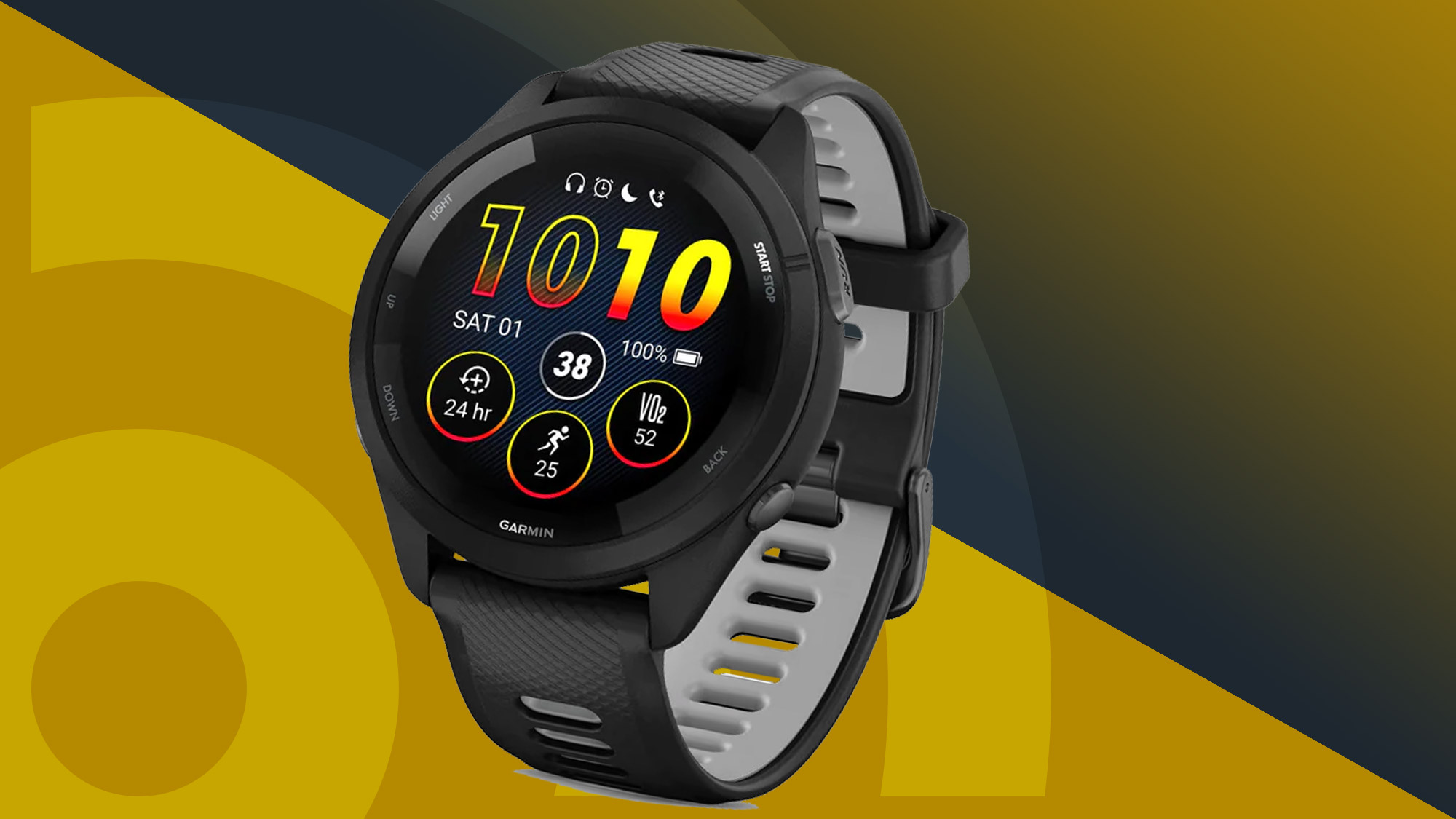
The best running watch will help elevate your training, whether you're tackling your first Couch to 5k, or trying to break your marathon personal best. Many of them come with built-in training plans, AI-powered features, and plenty of neat tools to help analyse your workouts and help you recover properly.
I've tested almost every running watch on the market, putting them through their paces to test their battery life, comfort, functionality, and performance. TR's fitness team and I rate all of the subjects out of five for design, features, value, and performance.
I've collated all of that data to bring you my top picks, and you won't find many options here that I haven't personally tested. For the models and features I couldn't test, such as the dive computer functionalities on the Garmin Fenix 8 and Apple Watch Ultra series, I asked another expert to do the testing.
The best Garmins dominate our top picks, but there are also options from Apple, Samsung, Polar, Coros, and Fitbit on this list.

Matt is TechRadar's Fitness, Wellbeing and Wearables Editor, which means he's an expert on workouts, smartwatches, and all things fitness tech. Matt's spent years covering the health and fitness beat and has personally tested many of the watches below.
The quick list
You can read about each of the best running watches in our full list below, but here are the cliffnotes: a brief word on our top running watches, and who they're best suited for.
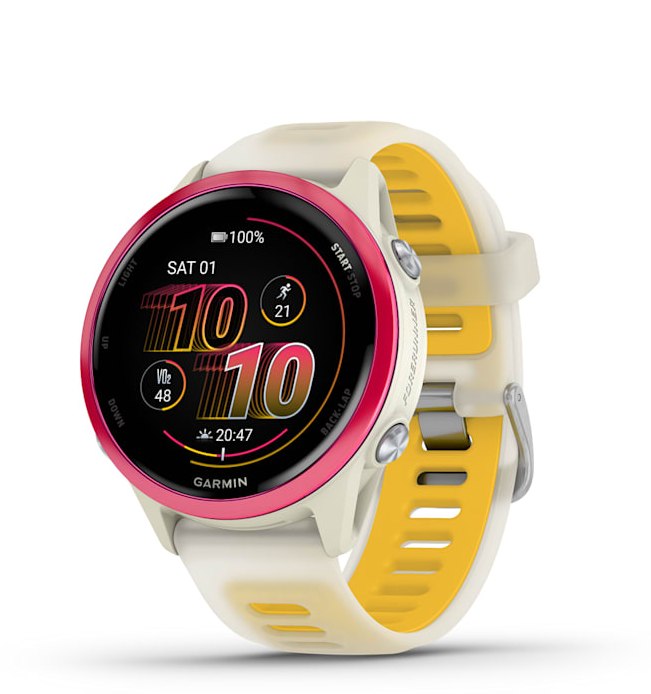
The best running watch for most people
Garmins are system-agnostic, the Forerunner is Garmin's premier running watch brand, and the 570 is bang up-to-date. The best pick for most people, unless you want a cheap, ultra-premium, or phone-specific watch like an Apple Watch.
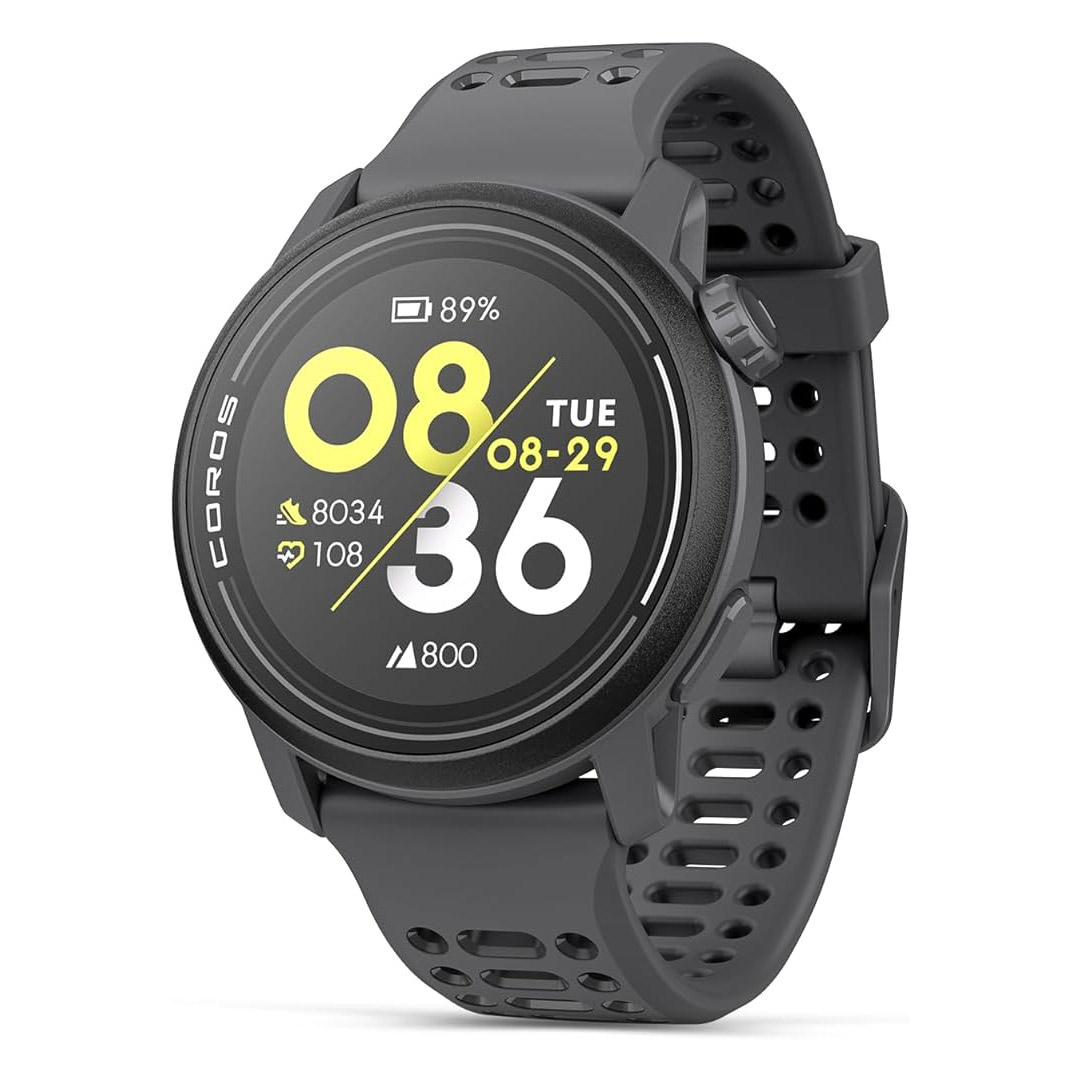
The best budget running watch
If you want a cheaper option than Garmin, the Coros Pace 3 is an excellent long-distance running watch, very attractively priced and bursting with features.
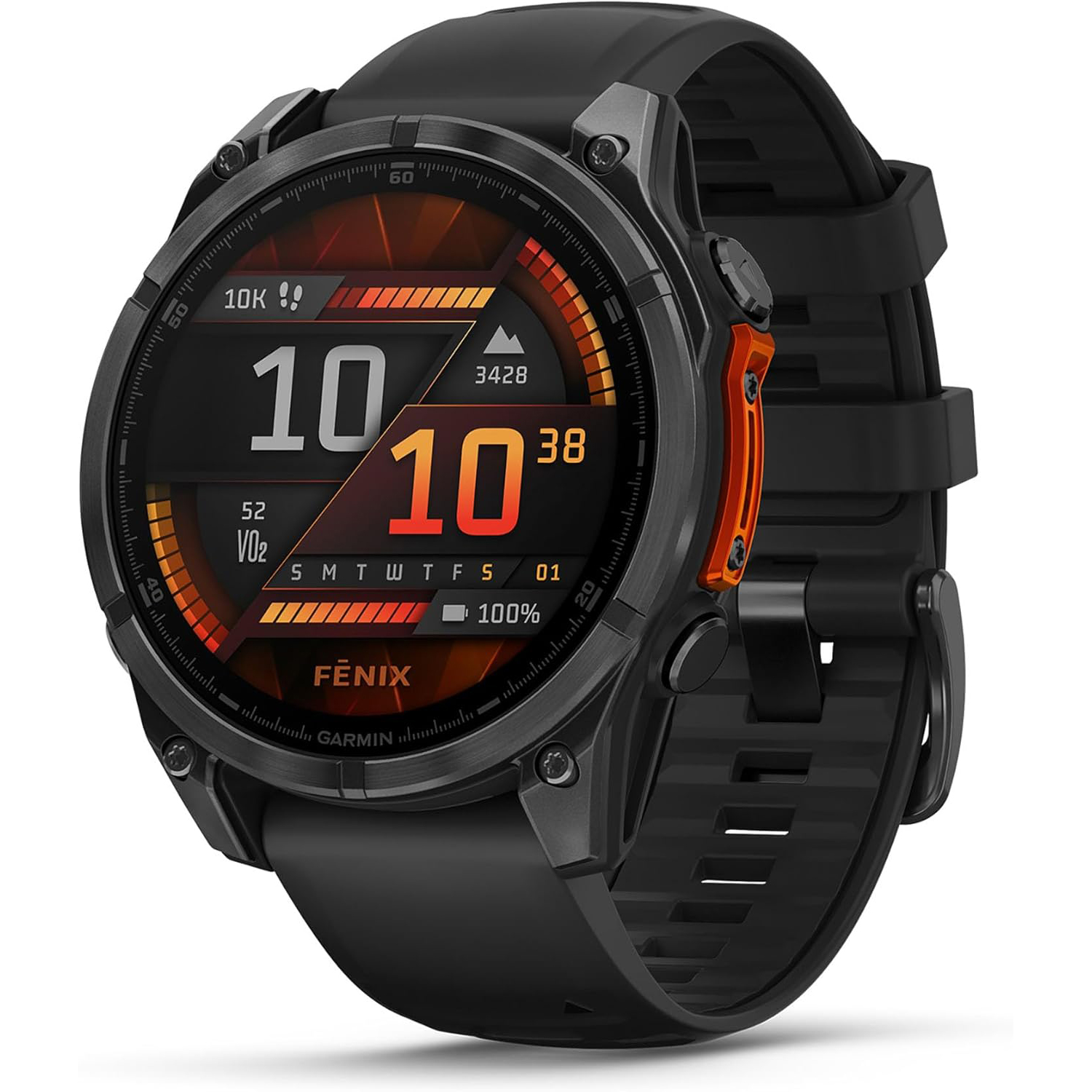
The best premium running watch
Ideal for outdoor adventures that demand the very best in smartwatch capabilities. With GPS, an AMOLED display, and an LED torch for attracting attention, you'll have everything you need for any trip.
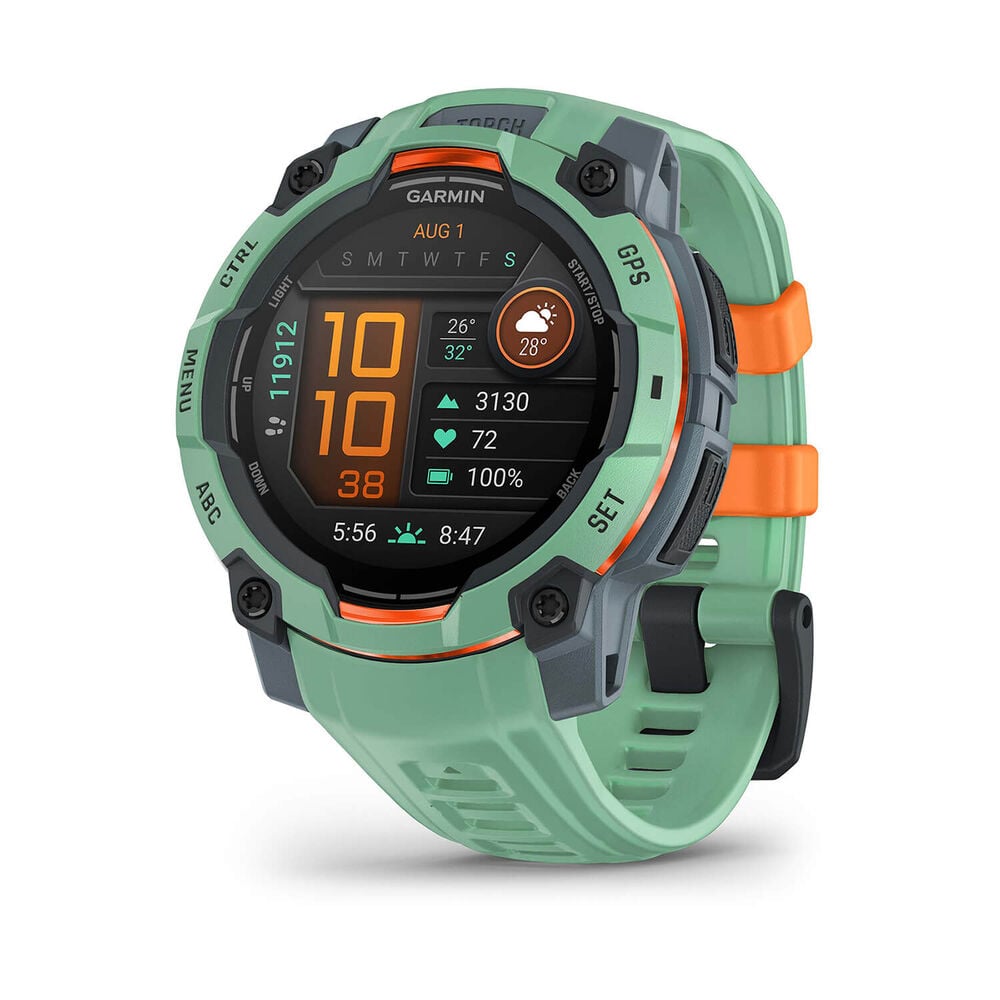
The best for trail runners
The best running watch for trail runners is the excellent Instinct 3, replete with its brilliant suite of outdoor tools and super rugged design.
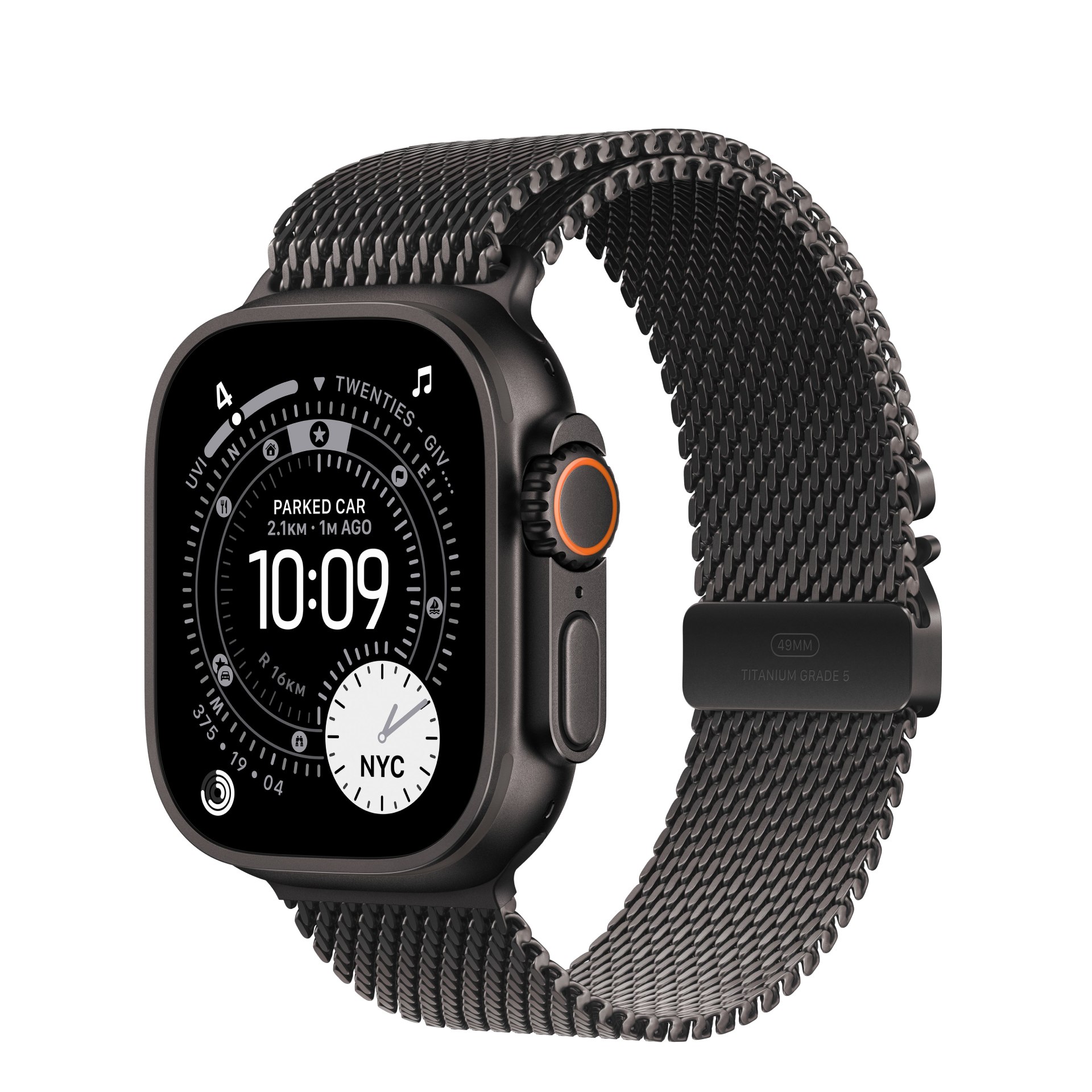
The best for iOS users
The Apple Watch Ultra 3 is an incremental upgrade that brings a world-leading screen to an already beautiful design. The watch improves with 5G connectivity and a 42-hour battery life, up six hours from last year, which is essential if you're out a lot and using GPS at the same time.
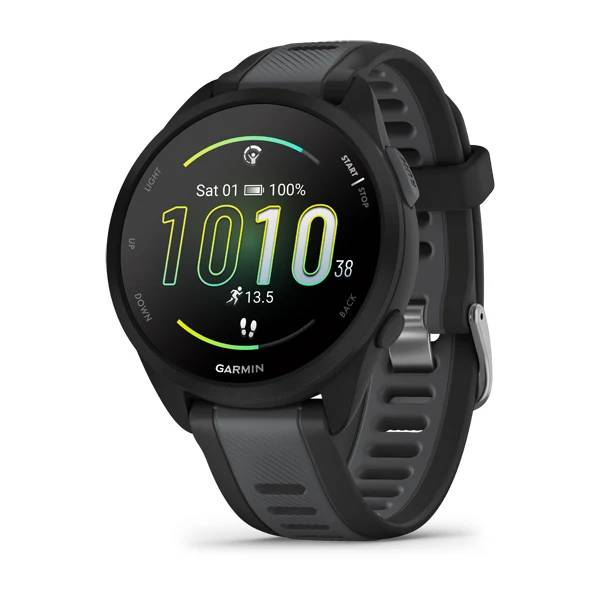
The best cheap Garmin
The Garmin Forerunner 165 is just as reliable as the Forerunner 265, packing both basic and advanced features on a more budget-friendly level.
Load the next four products...
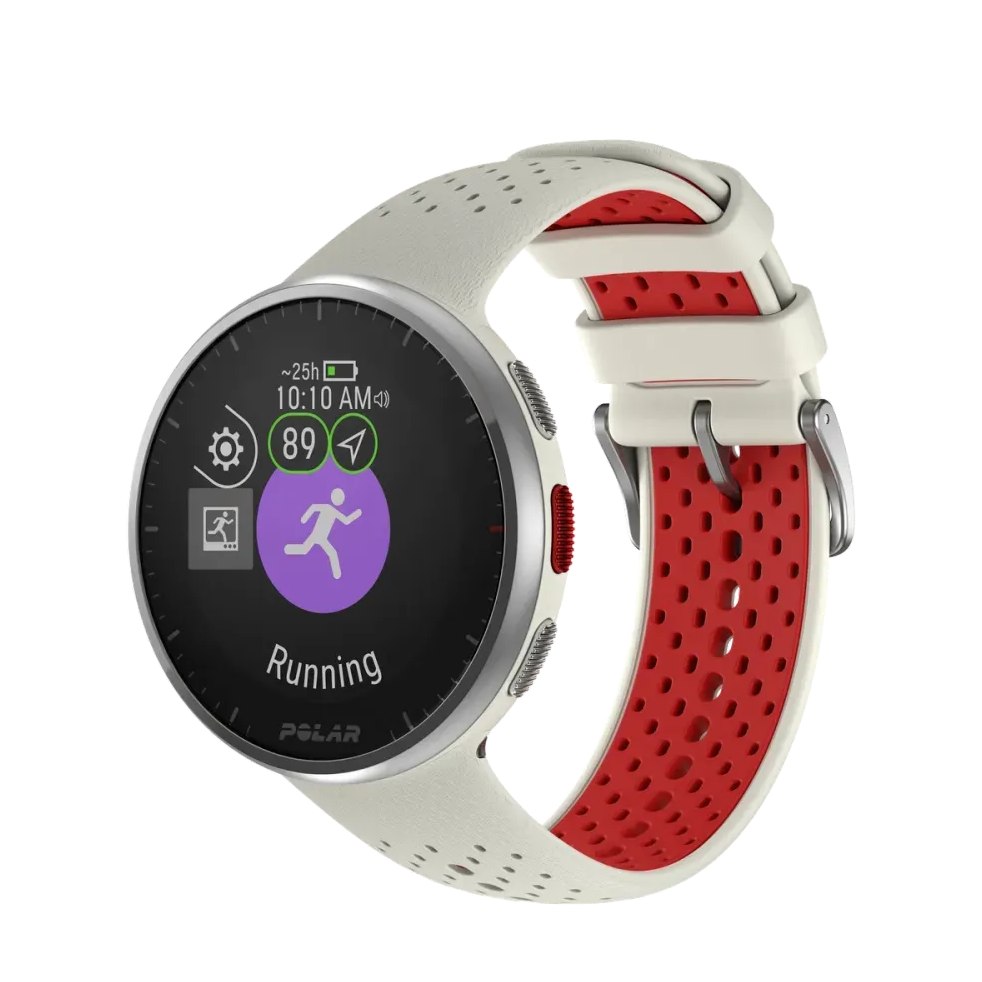
The best value Polar
Polar's Pacer Pro is a fantastic watch. Starting with Polar's background in heart rate tracking, the Pacer Pro is a good value mid-range option with a slick metallic finish and great GPS, even if the LCD screen is a bit bare-bones.
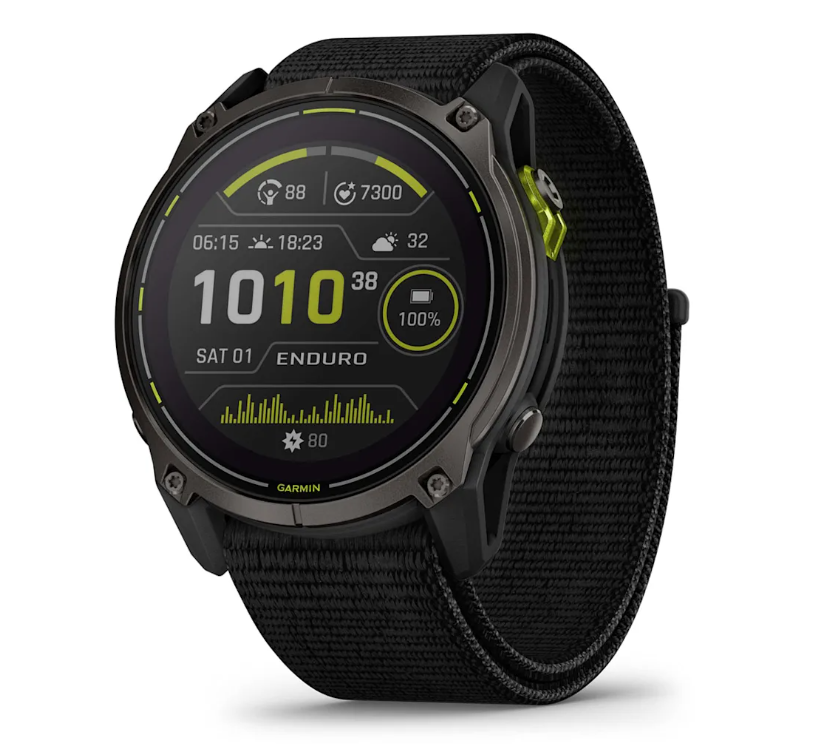
The best for multi-day events
The Garmin Enduro 3 is a monster of a watch with a massive 90-day battery life. In GPS mode, you can get a stonking 210 hours straight, as long as you give it three hours of sunlight a day. A bit like a houseplant.
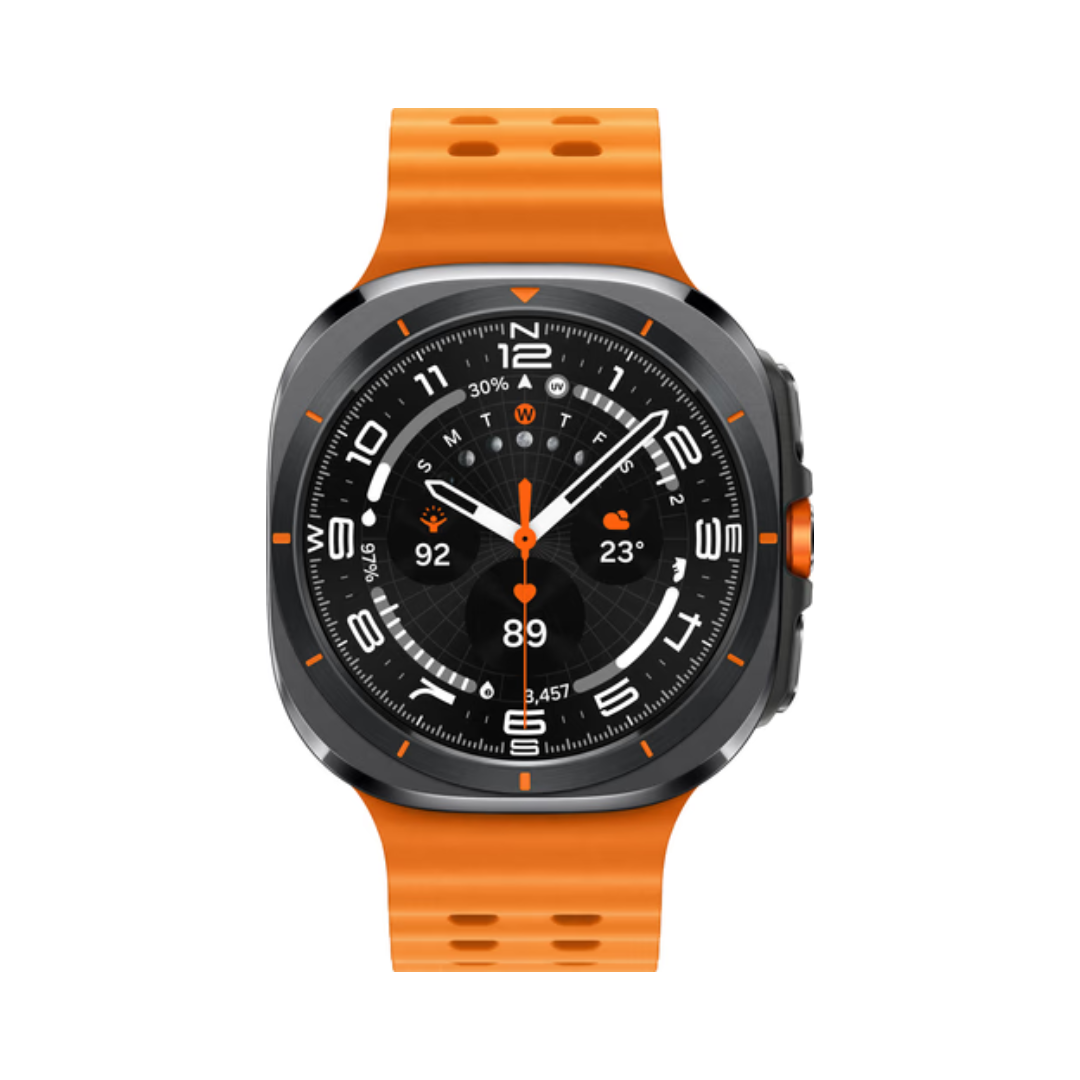
The best Wear OS watch for runners
The Galaxy Watch Ultra is Samsung's best watch yet, with a powerful set of specs and a smorgasbord of third-party apps. We love this watch for its build quality, its outdoor-focused features, and its new programmable Quick button.
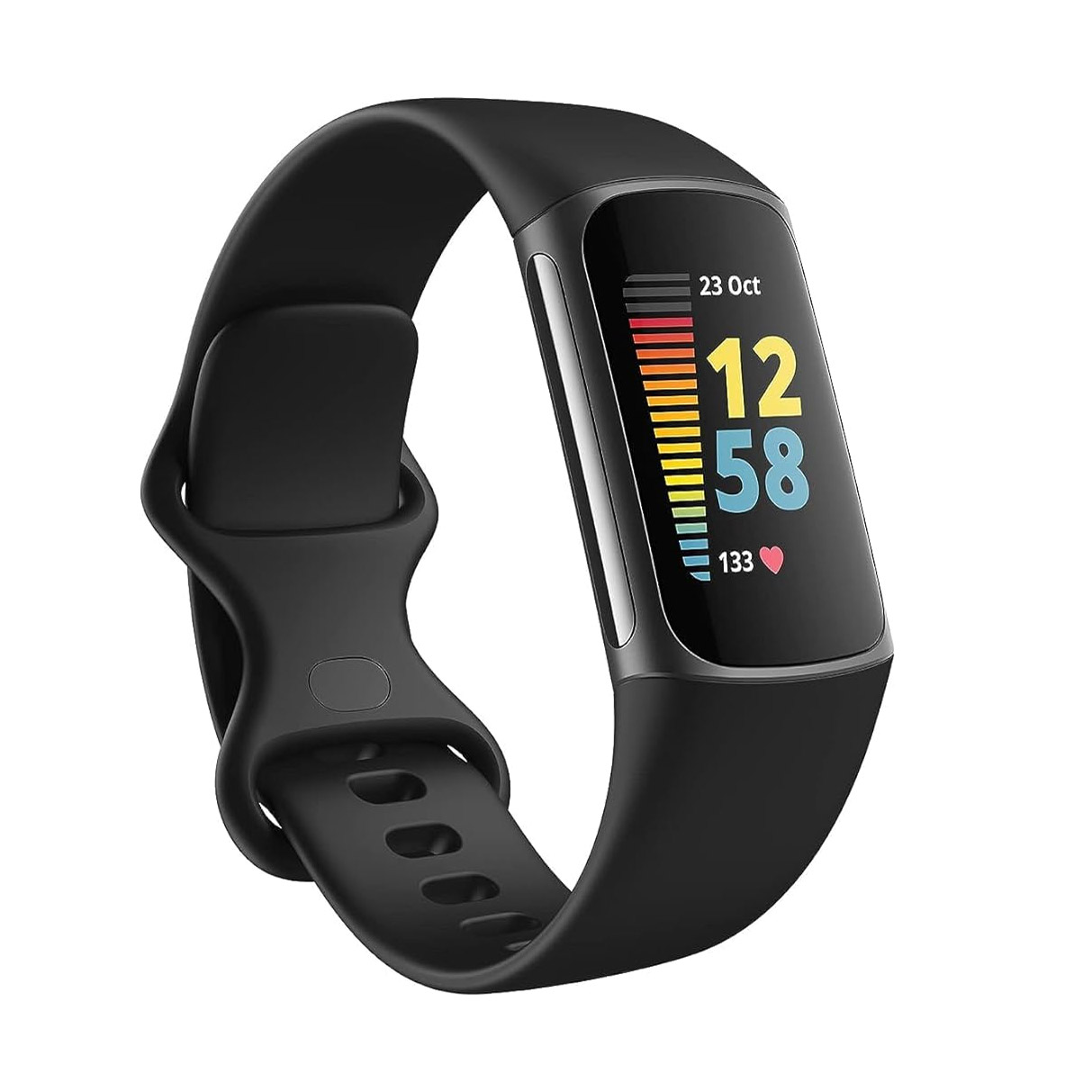
The best Fitbit for runners
Even though the Fitbit Charge 6 is out, the Charge 5 is cheaper and better-reviewed, so it's our choice for those who want a slender fitness tracker which is GPS-enabled for advanced running metrics.
Best overall
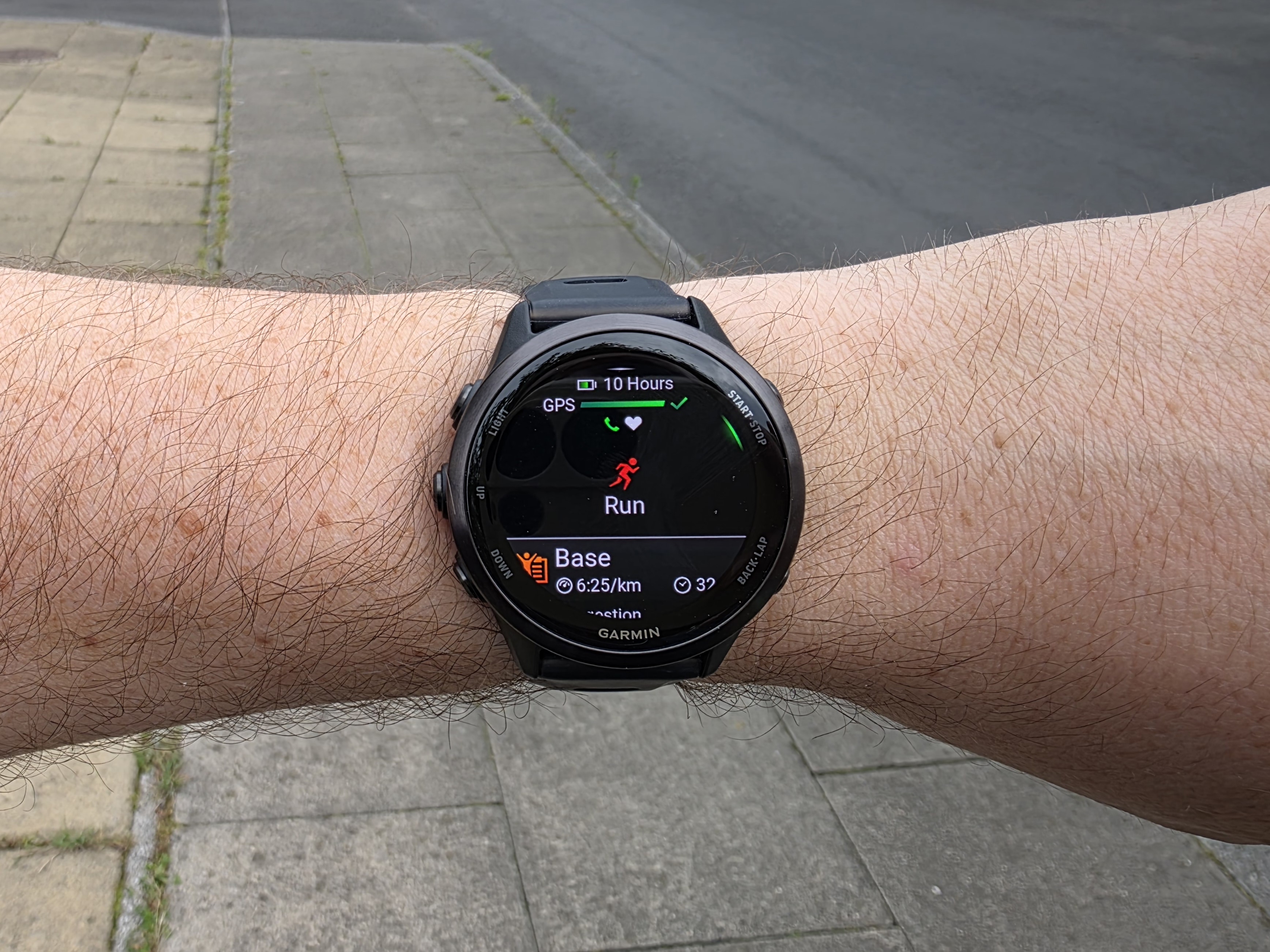
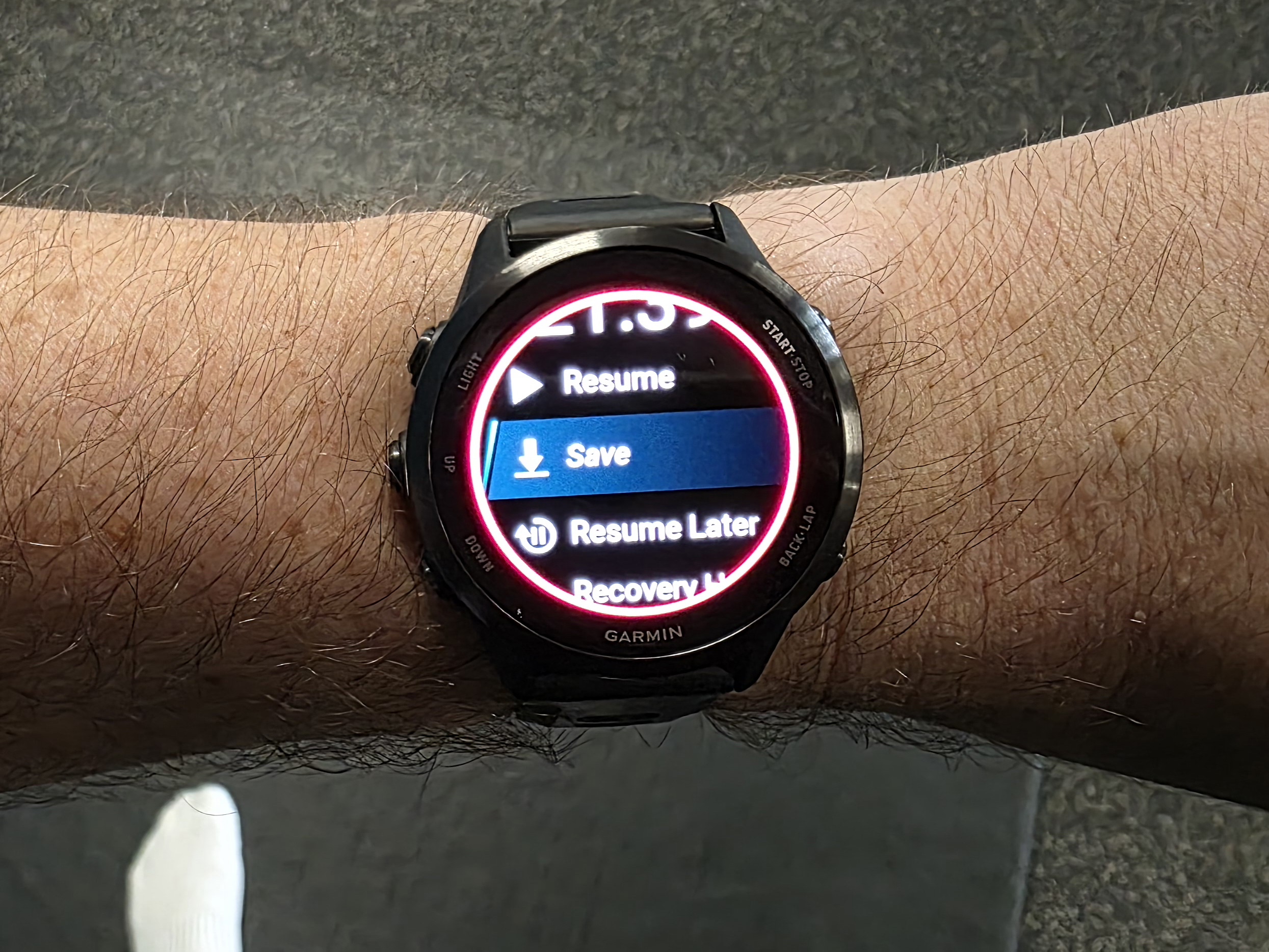
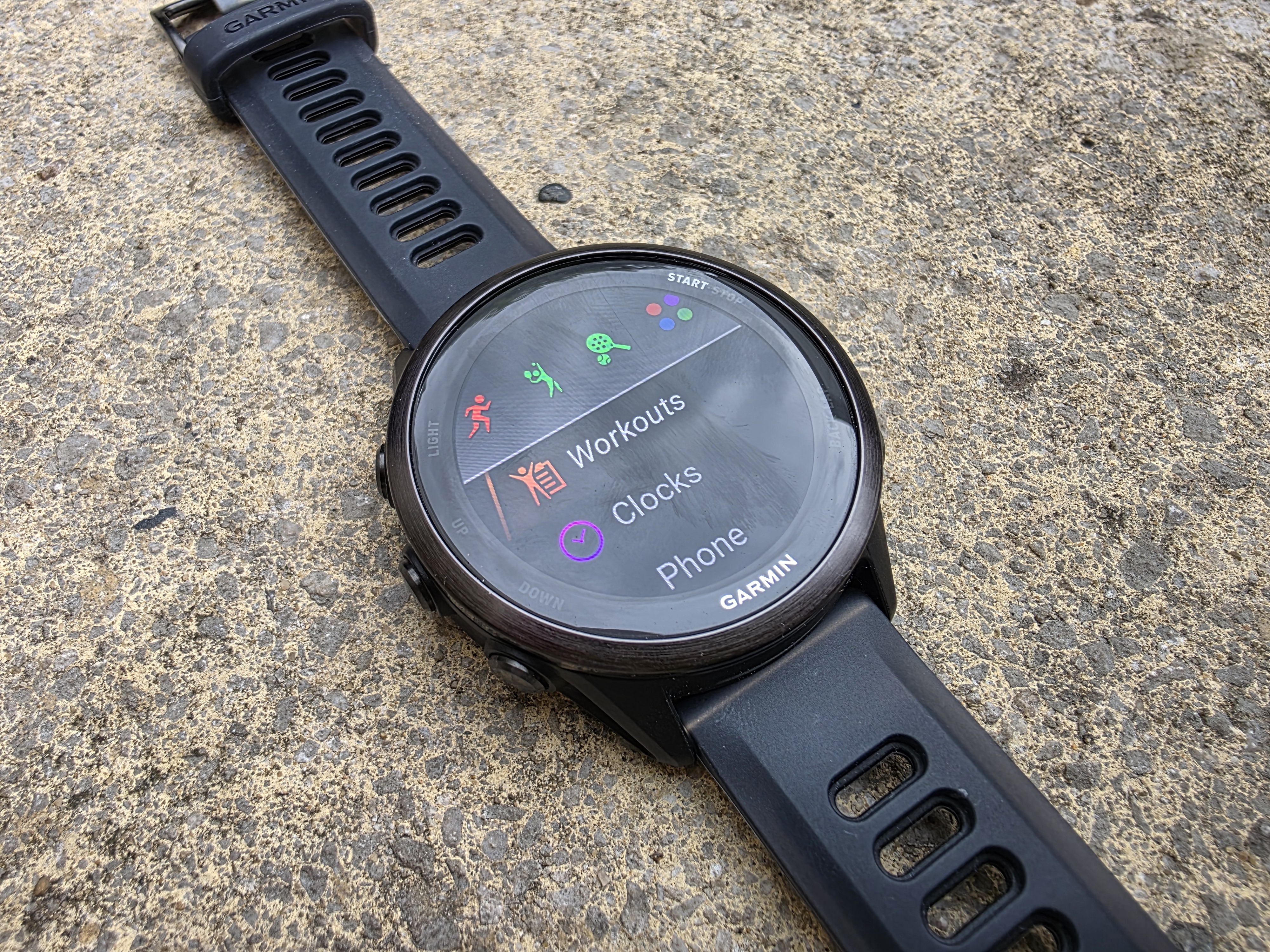
Specifications
Reasons to buy
Reasons to avoid
Garmin Forerunner 570 is a great watch for you. It's as good as the Forerunner 955 – only the fact that it shares many of the same features as its predecessors, and its premium price, stopped it from winning an elusive five stars.
Its location-tracking and biometrics are extremely accurate thanks to the latest Garmin software and multi-band GPS, and it's packed with genuinely useful training tools to help you get more from your runs, bike rides, and swims.
A Training Readiness score and Heart Rate Variability functions allow you to more accurately tell if you're fully recovered, offering training suggestions based on how ready or how fatigued you might be. It measures how well you've recovered from the previous day's exertions, which helps you make every training run as effective as possible. Lifestyle Logging is a new feature, allowing for contextual recovery information in-app.
I'm also particularly impressed by the sheer degree of customization on offer, especially via the new AMOLED screen, and the inclusion of a speaker and microphone to take calls on-wrist.
There are bigger, more powerful, classier-looking running watches (a lot of the colors are very garish) with a broader range of sports modes and better battery lives out there, but the Forerunner 570 is a superb training aid and suitable for everyone from fun-runners and serious athletes.
Read our full Garmin Forerunner 570 review
Best budget watch
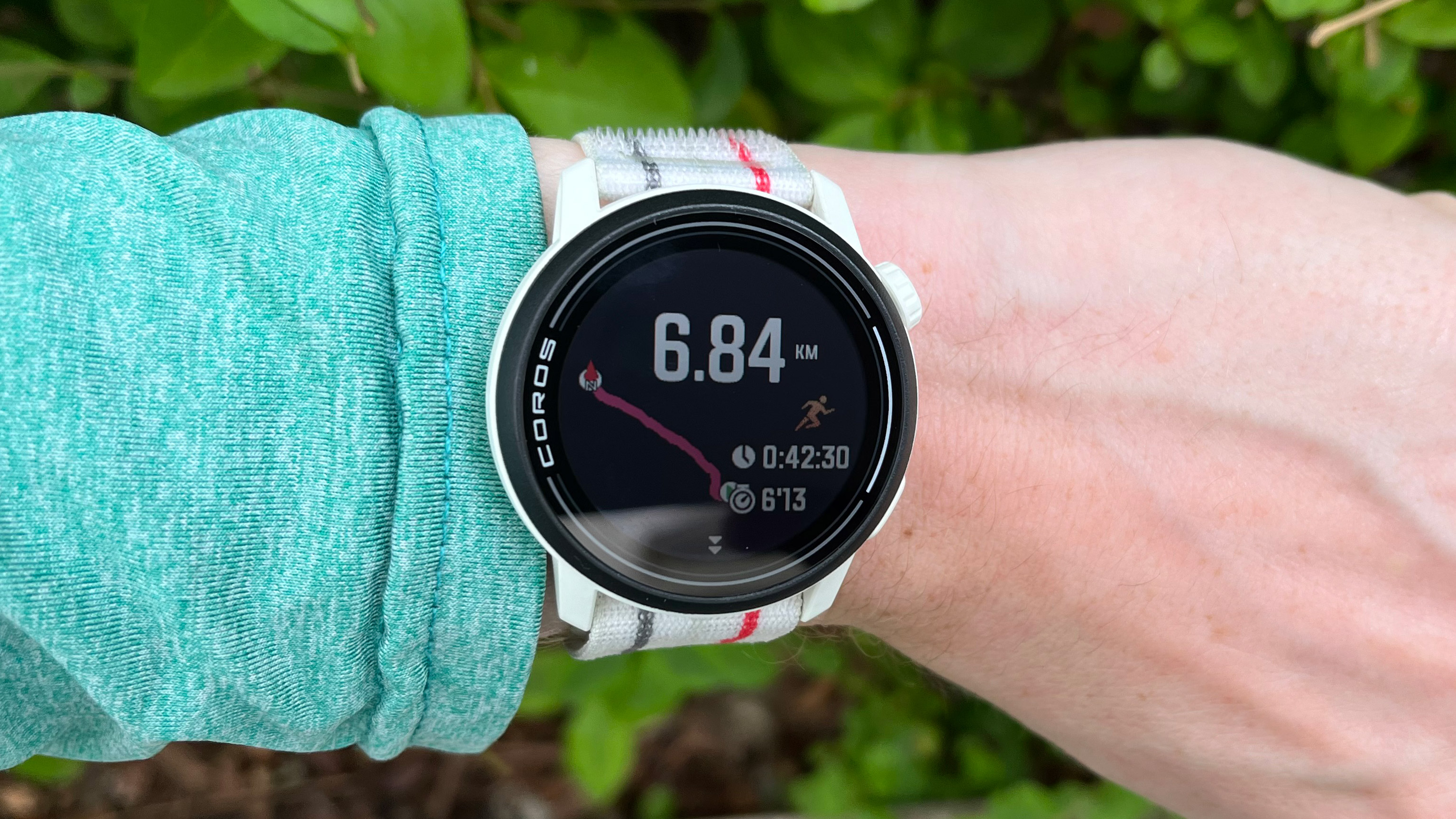
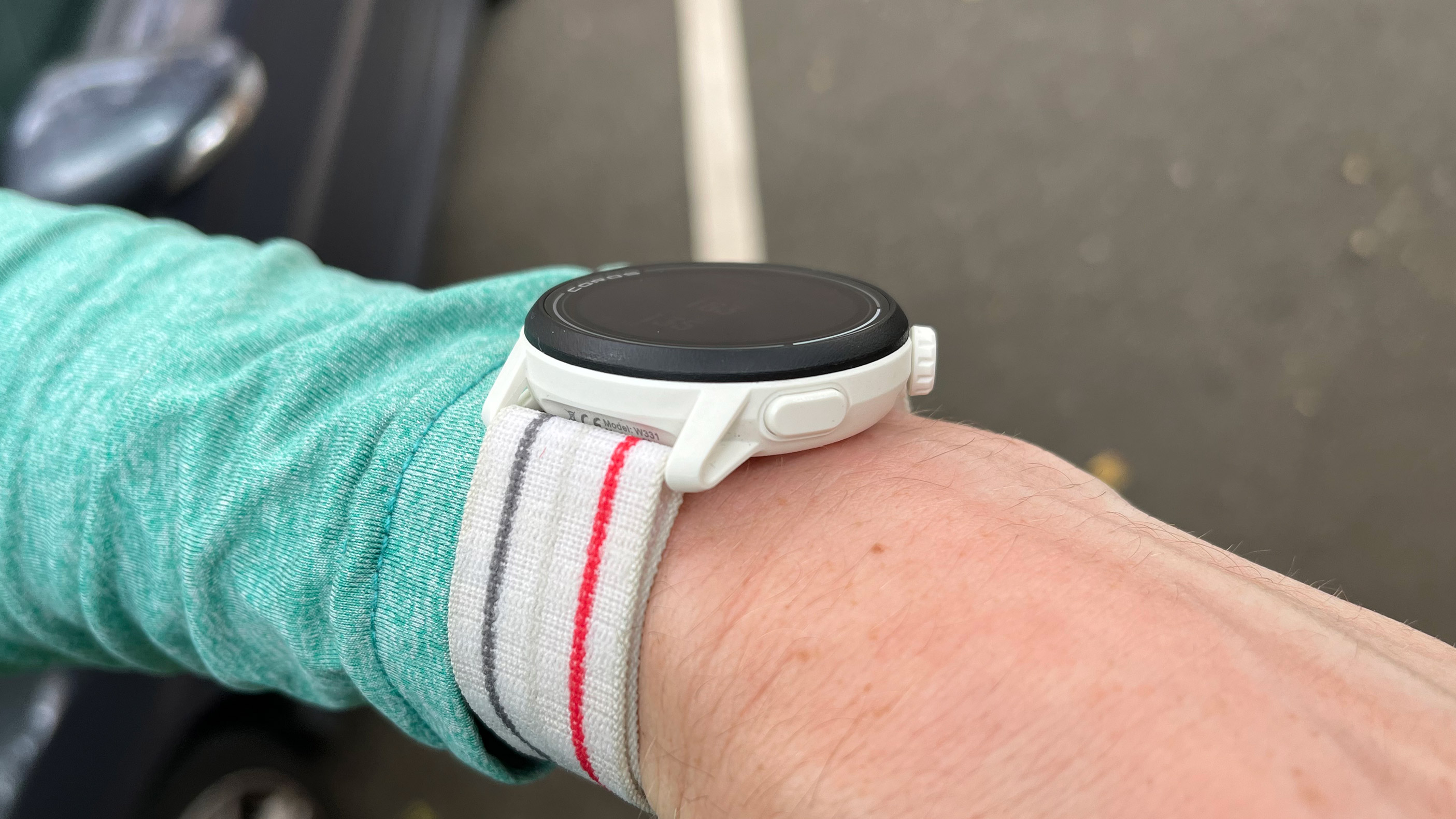
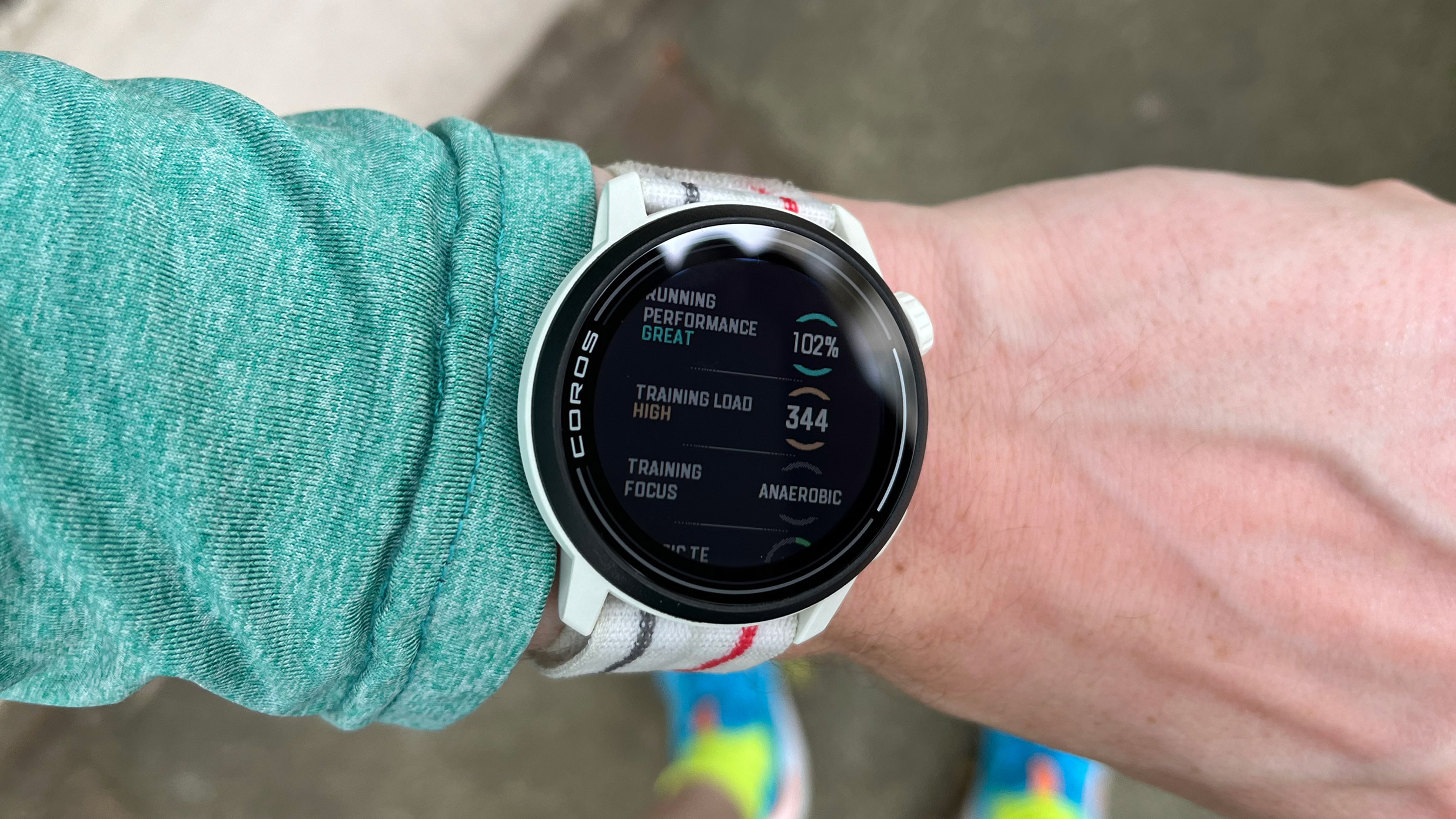
Specifications
Reasons to buy
Reasons to avoid
The Coros Pace 3, like its predecessor the Pace 2, is an outstanding running tool. At just 32g, it's barely noticeable on the wrist but includes lots of features we'd expect to find in more expensive running watches, including outstanding accuracy, workout modes tailor-made for runners and triathletes (I tested it in the pool and found stroke count accurate) and compatibility with third-party sensors like chest-strap heart rate monitors. "Running fitness" is a new composite metric that tells you everything you need to know in a single number, which is great.
At $229 / £219 / AU$399, it's the best value in the list by far when you consider longevity and amount of features for price. If you do happen to stray off the radar (in a tunnel, for example), the watch automatically calculates your cadence and stride length so you can keep monitoring your progress.
In my tests, my only complaint was that the screen was a little dim and could be tricky to read in daylight without a tap of the backlight button, which puts a small dent in its otherwise impressive battery life, but that's a small gripe.
Read our full Coros Pace 3 review
Best premium watch
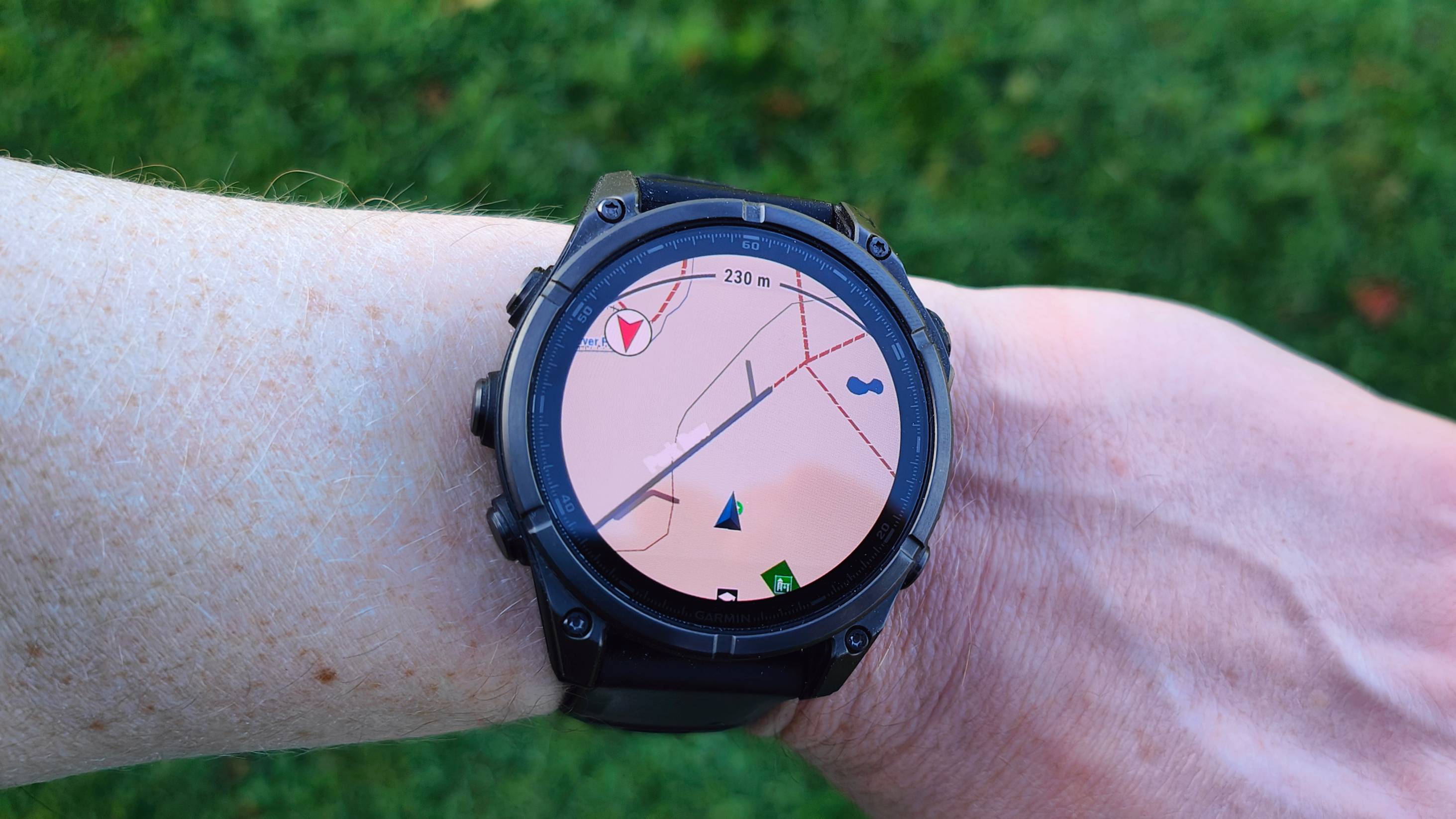
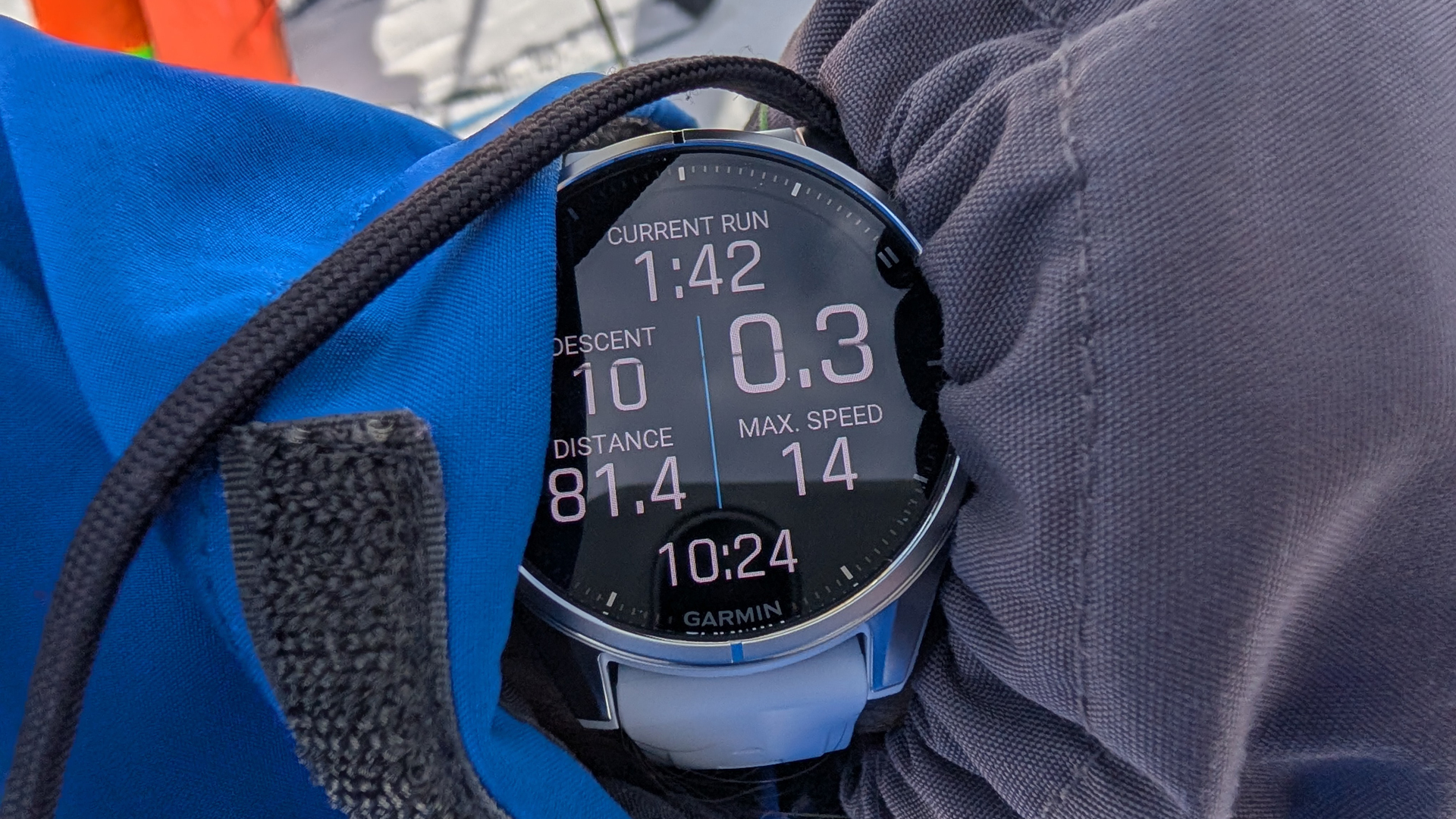
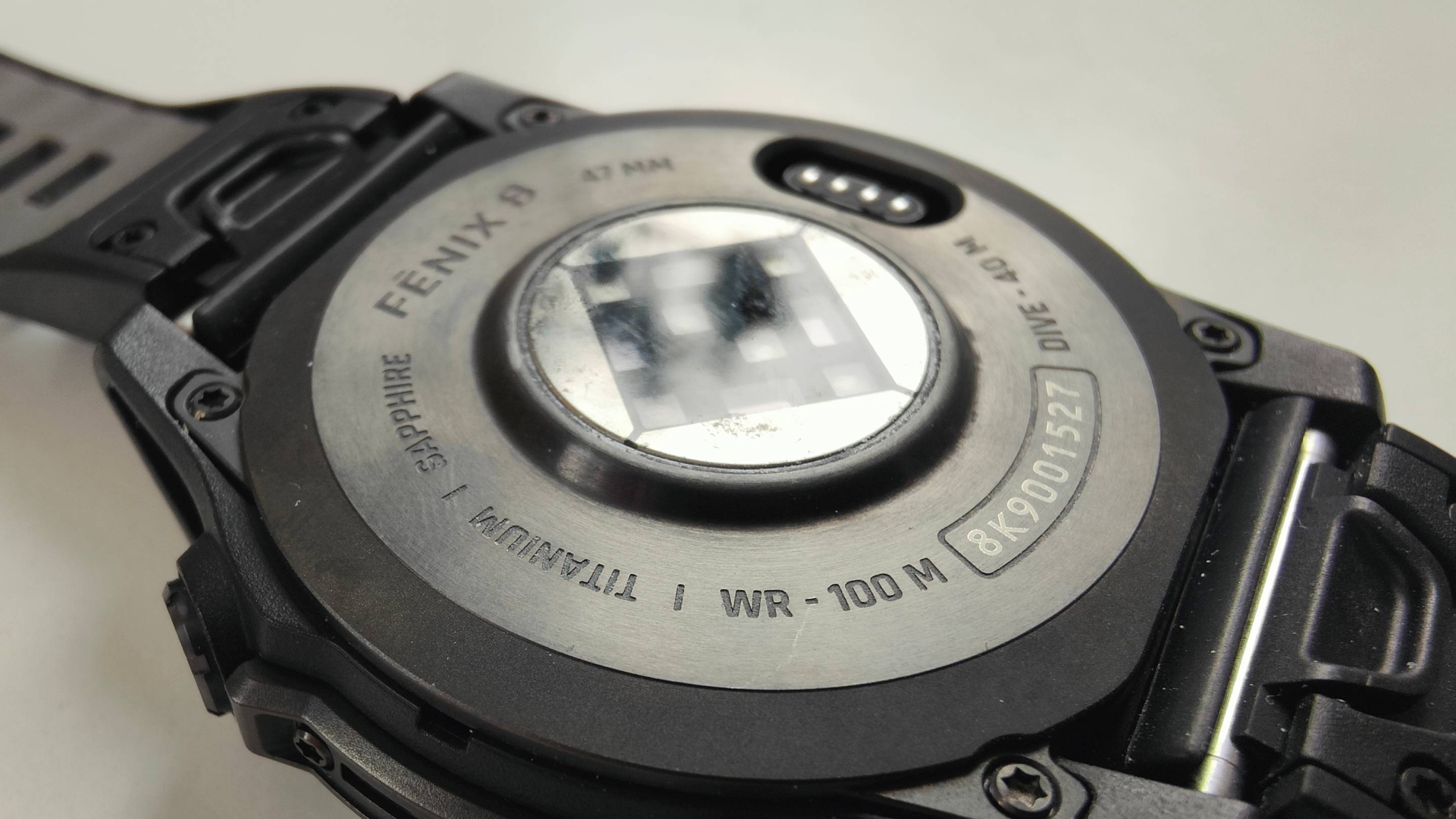
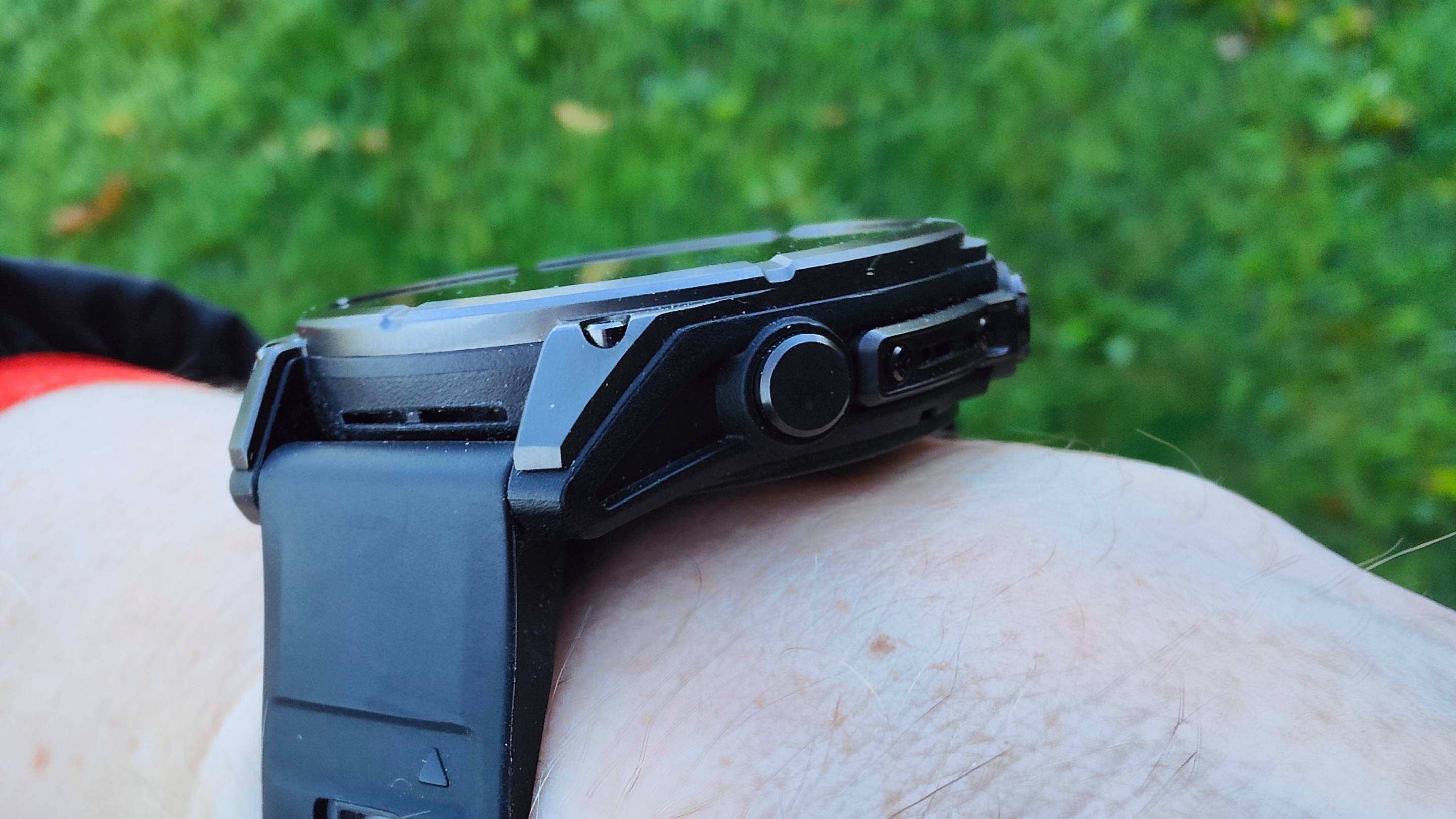
Specifications
Reasons to buy
Reasons to avoid
The Garmin Fenix 8 delivers all the latest hardware features, which are part of the most recent flagship running watches. One of the standouts is the new GPS software that includes "dynamic routing" - a feature that generates directions during workouts. This is ideal for those who like to deviate mid-run or mid-cycle from a pre-planned route.
The AMOLED display is another highlight of this incredible running watch. With a top-quality resolution of 454 x 454 px, this is a display that is not only beautifully bright but also incredibly clear. These are two ideal characteristics for any runner. You can choose from three different sizes as well as an additional option of a solar-powered memory-in-pixel display or a brighter AMOLED one.
Waterproofing has also been improved from version 7, with diving capabilities all the way down to 40 metres. This is a serious watch featuring hardware that goes well beyond a little dip in the sea. It also features a working dive computer for scuba activities, which we actually asked a diver to test.
Safety, especially at night, is of paramount importance, so the inclusion of an LED torch for attraction attention is a welcoming addition. It also helps with running safely at night. This is a watch that has thought of everything.
Read our full Garmin Fenix 8 review
Best for trail runners
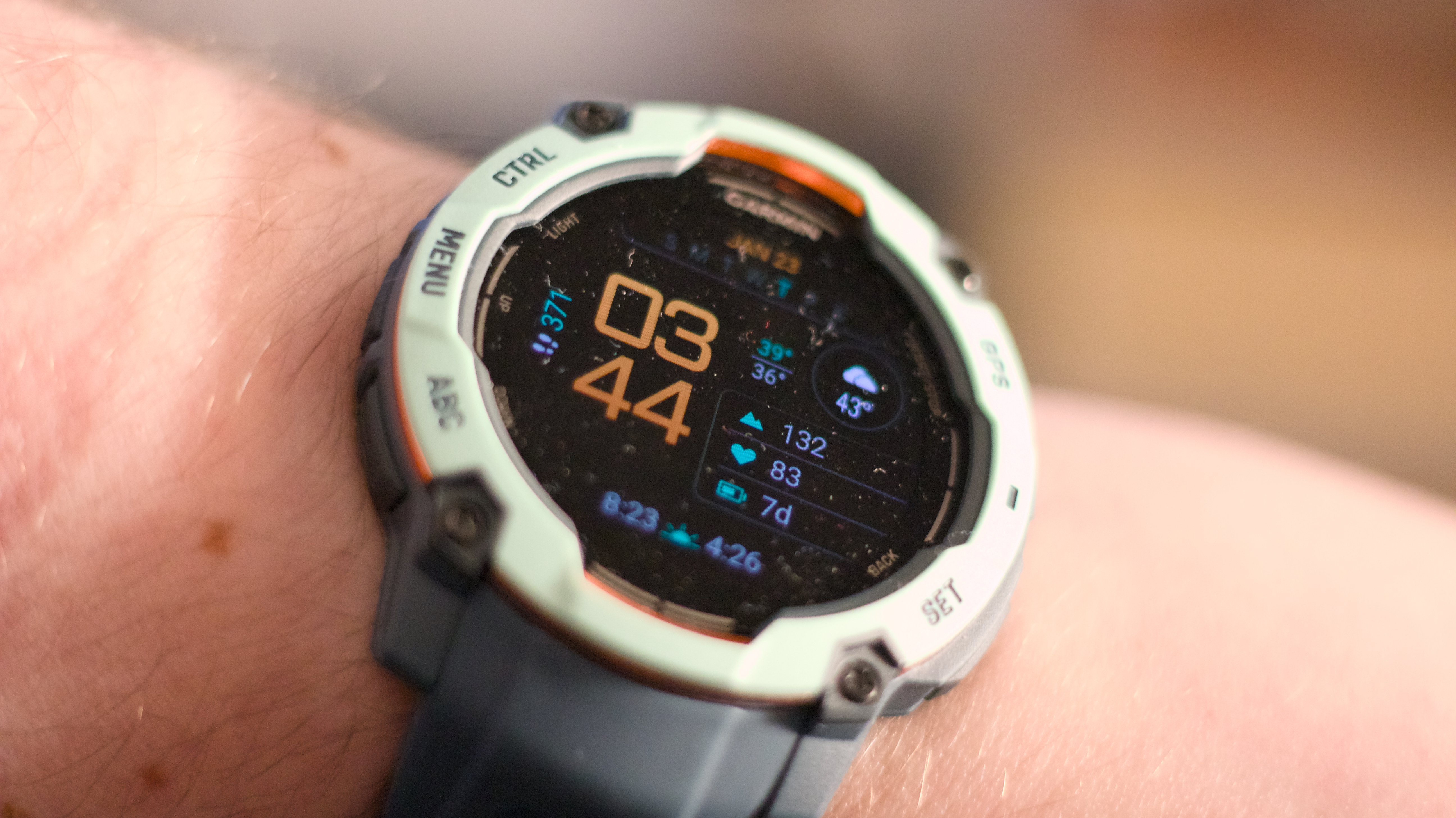

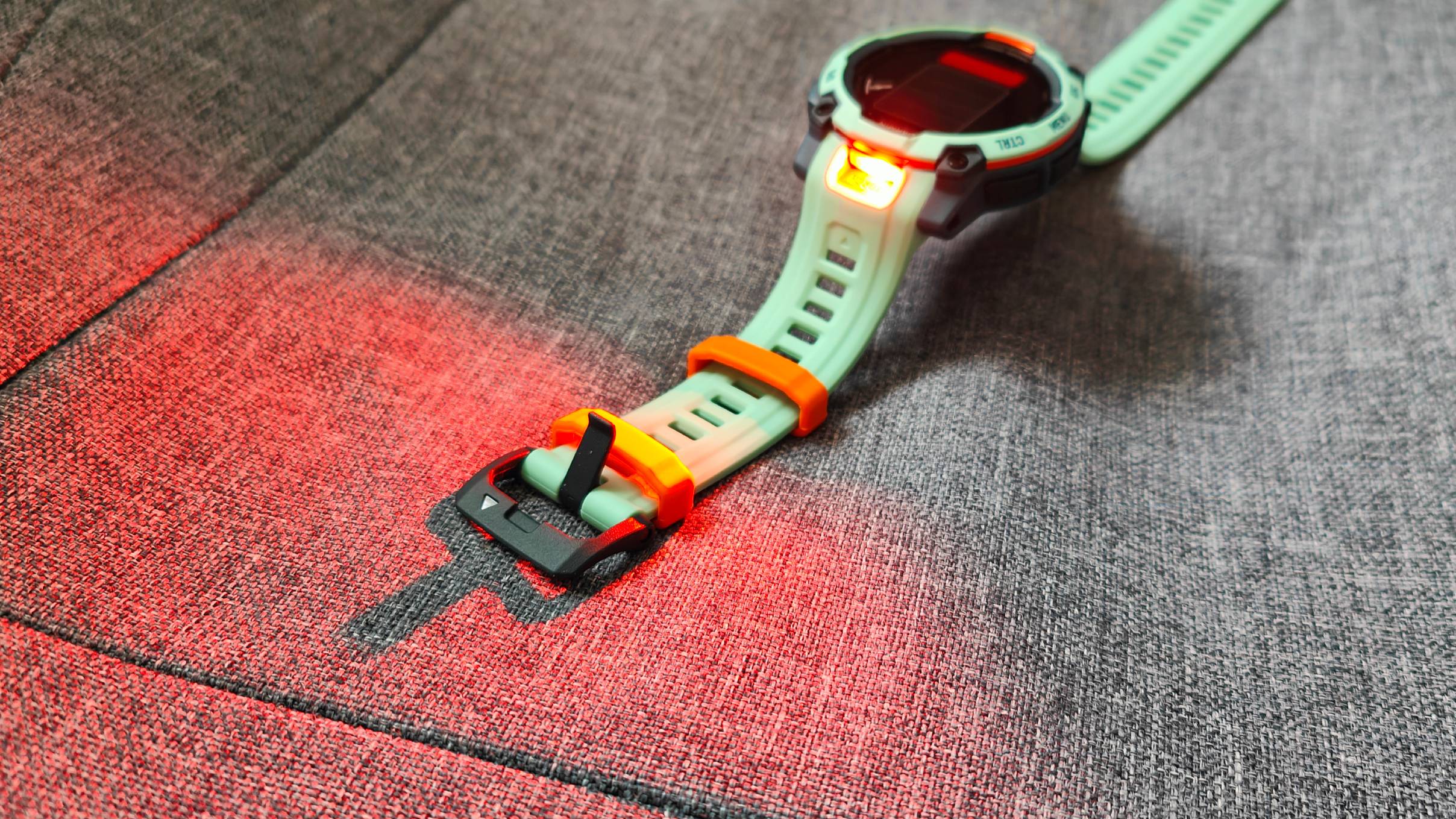
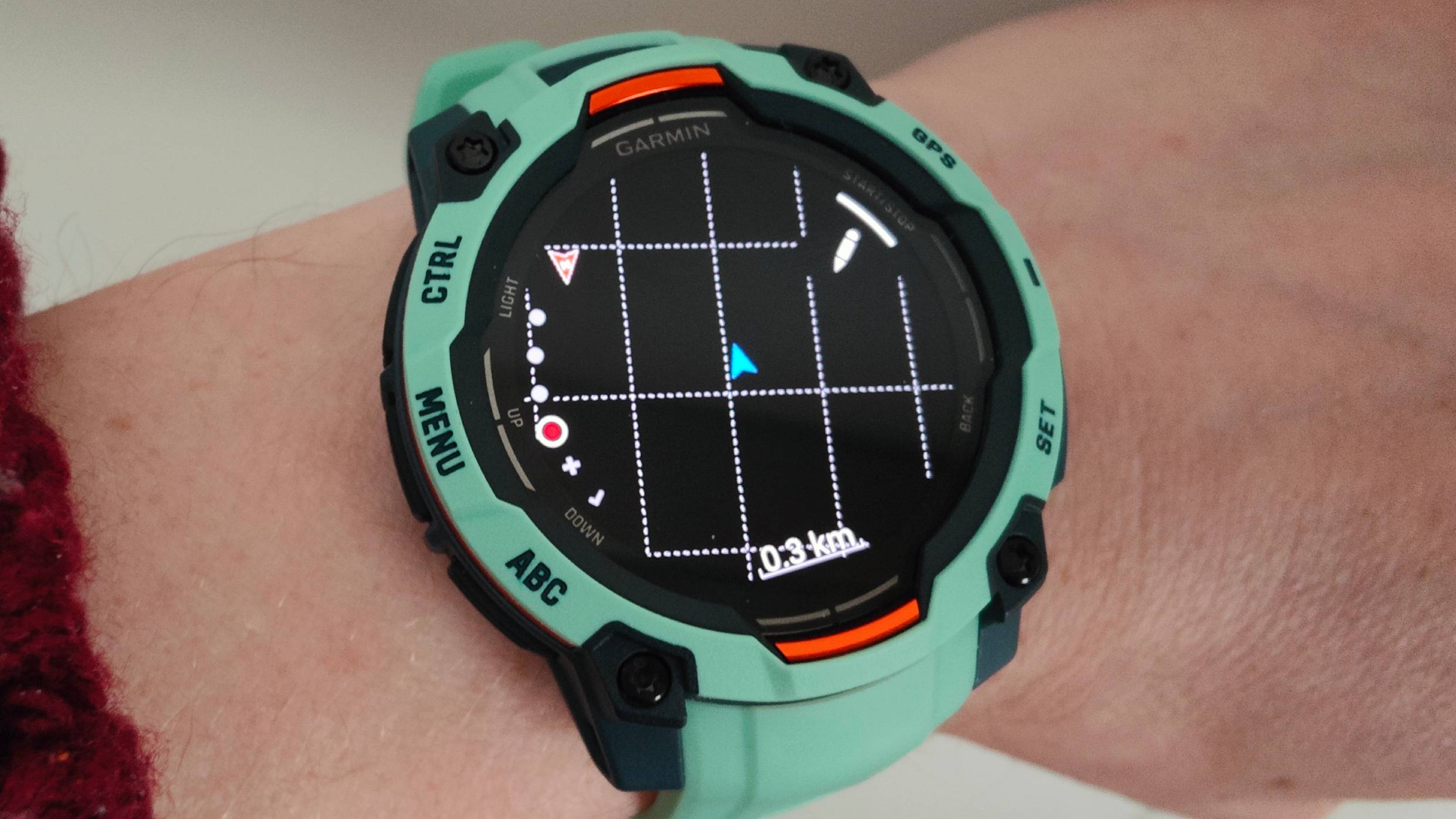
Specifications
Reasons to buy
Reasons to avoid
New for 2025, the Garmin Instinct 3 is a brilliant, ultra-rugged smartwatch for the great outdoors. It builds on the successful formula of the Instinct 2, delivering a bomb-proof polymer design and chunky aesthetic.
It comes in a new array of flashy colors and features improved SatIQ GPS tracking and a new LED flashlight. There's the choice of AMOLED or solar-powered MIP screens, the latter delivering marathon battery life for very long trail runs and adventures.
Under the hood, you get all of Garmin's industry-leading health and fitness tracking, including the usual massive array of running features and metrics.
Runners will get access to Garmin's daily suggested running workouts and coach experts, HR zones and alerts, recovery times, GPS-powered time, distance, and pace, running dynamics, vertical oscillation, ground contact time, stride length, power, PacePro, and beyond.
It's truly the very best Garmin has to offered packed into a rugged shell for the great outdoors. I loved it during testing and found it stacks up to the hype in nearly every way.
Read our full Garmin Instinct 3 review
Best for iOS users
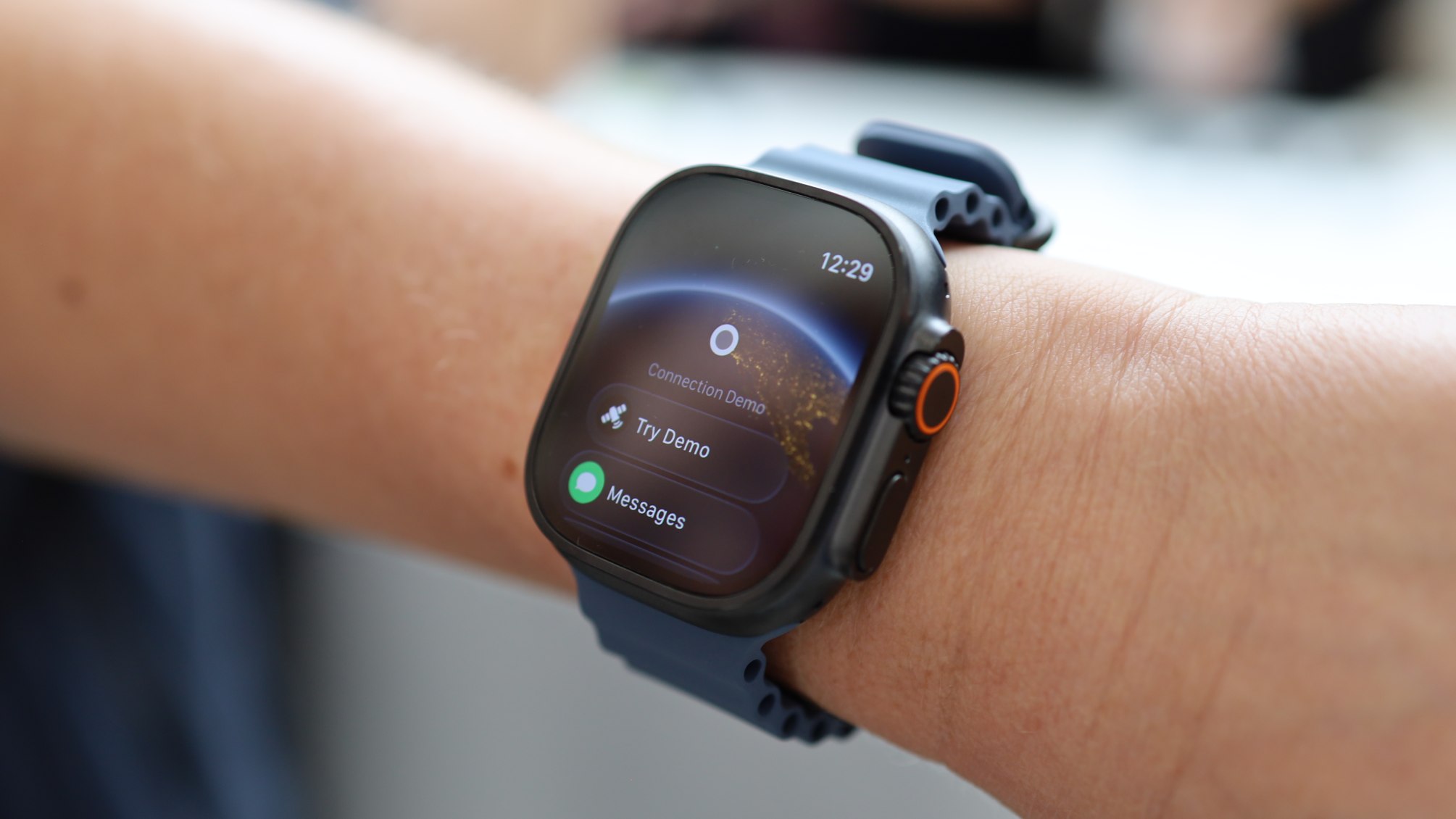
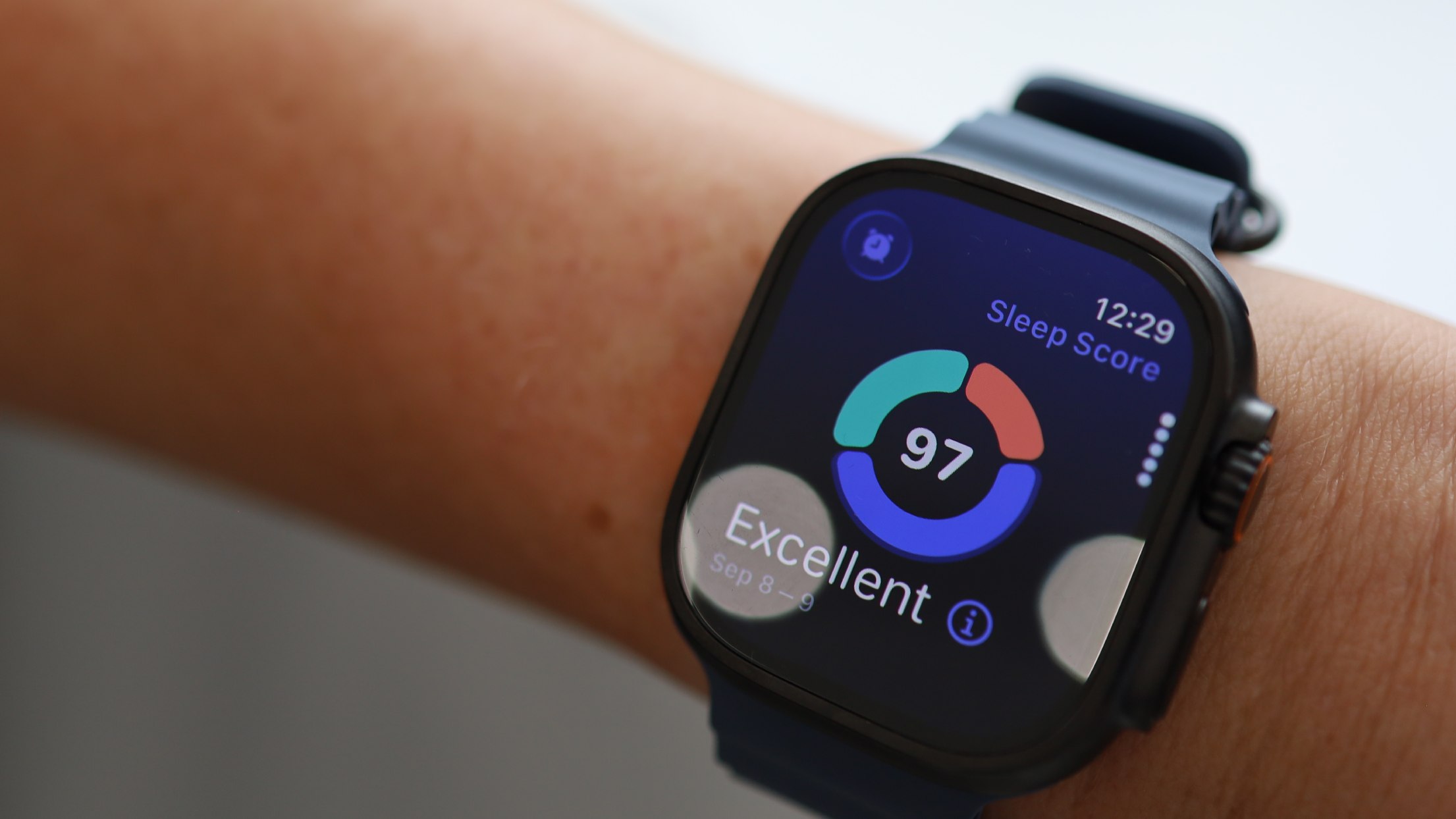
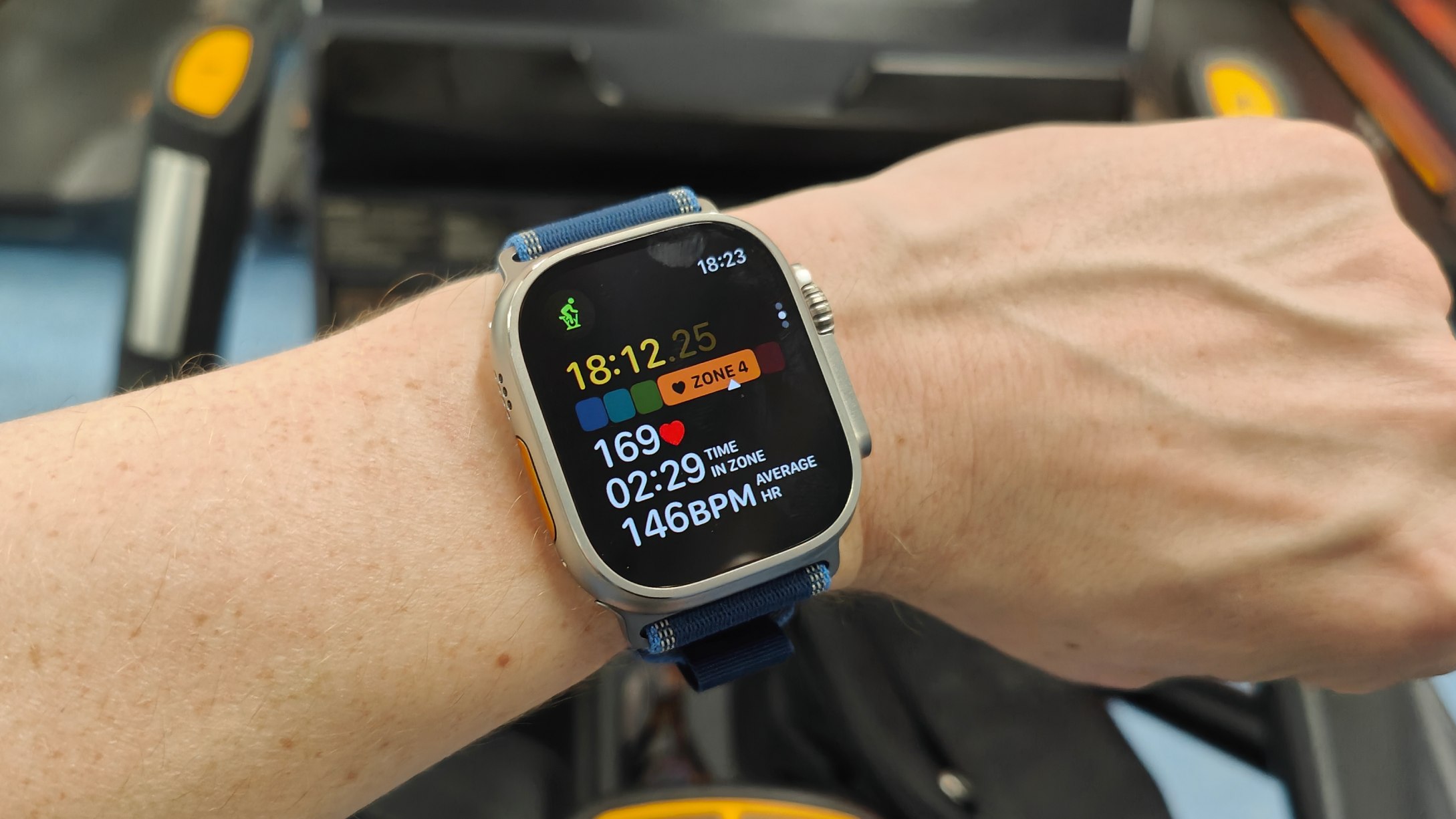
Specifications
Reasons to buy
Reasons to avoid
If you want the ultimate Apple Watch that you can take anywhere, including into the wilderness and under the sea, then the Apple Watch Ultra 3 will be perfect for you, especially when paired with an Apple Intelligence-capable iPhone
The refresh rate is like water falling off a duck’s back, and it’s Apple at its peak. It's a very nice watch to use every day, with the gorgeous screen, titanium exterior and the hands-free Double Tap and Wrist Flick controls. These innovative new gestures allow you to start workouts, dismiss timers, answer calls and more, all hands-free.
You can load it with third-party apps to do almost anything, and it's one of the most accurate wrist-based run trackers we've ever used. I stress-tested this watch against a Polar H10 heart rate monitor, the most accurate way to measure heart rate available to most people during a workout, and it was accurate to within 1 beat per minute.
It's one of the very best on the market, which is why it also merits inclusion in our best smartwatch guide. Its downsides are that it's very expensive, it only works with iPhones, and at 42 hours, its battery life is incredibly short compared to most lower-power watches on this list.
Read our full Apple Watch Ultra 3 review
Best cheap Garmin
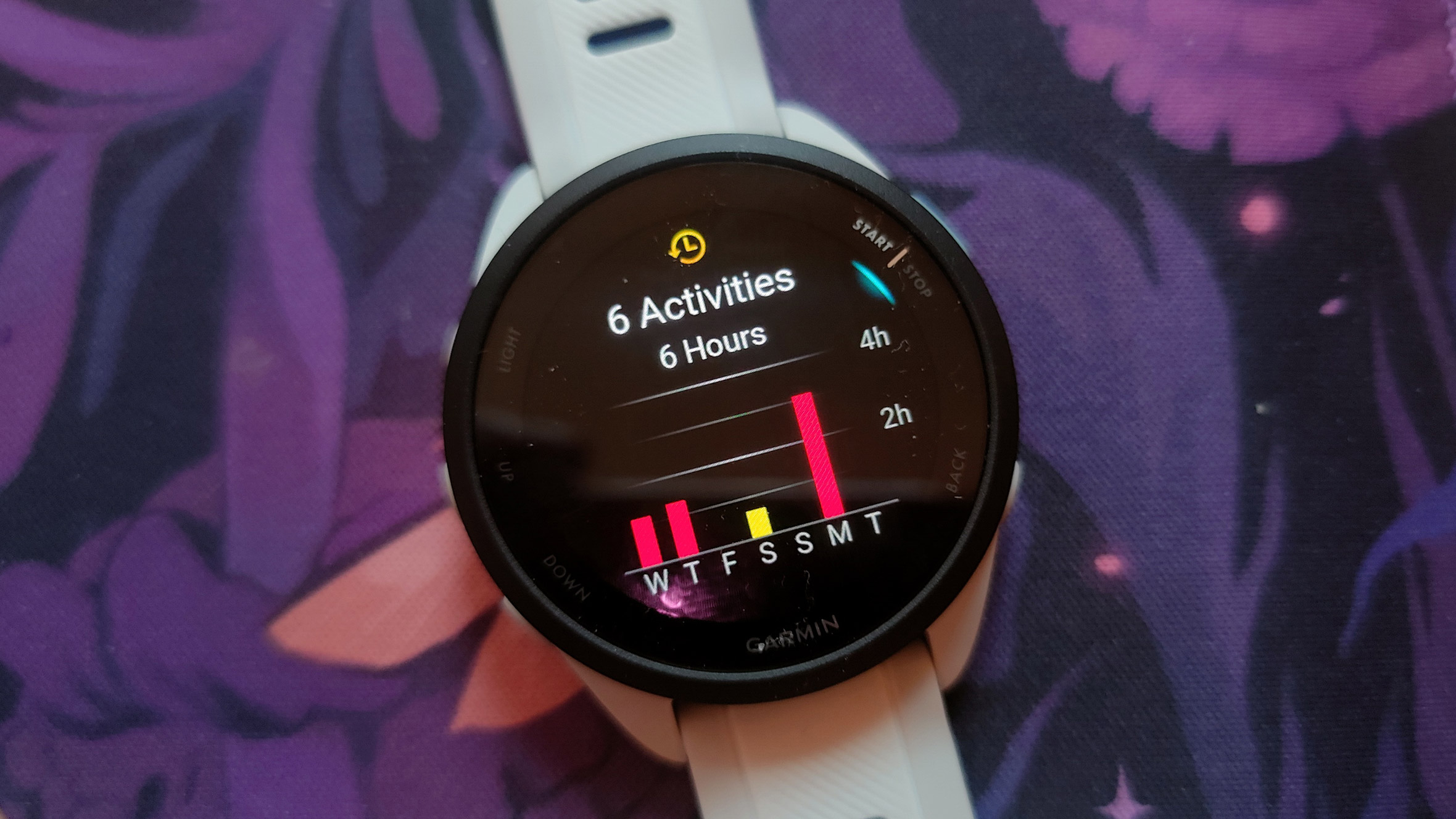
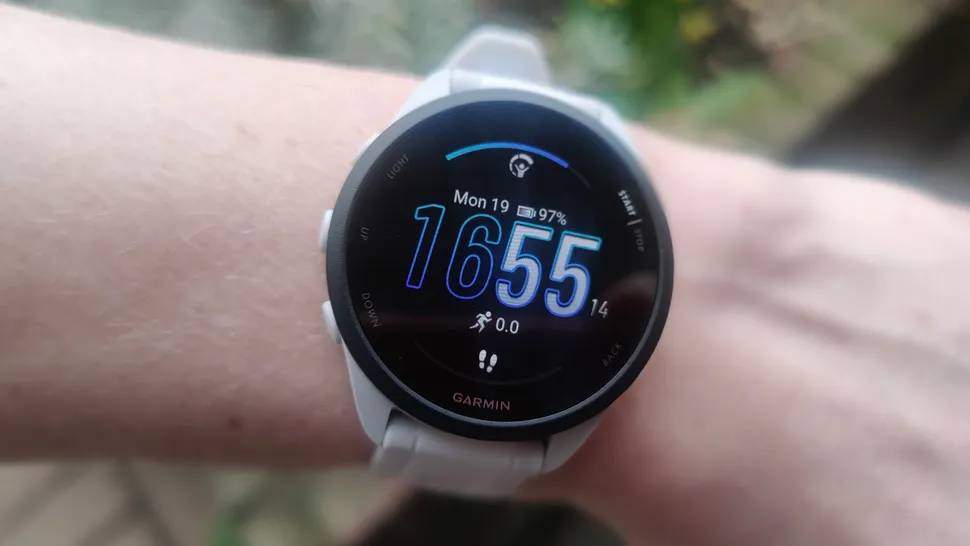
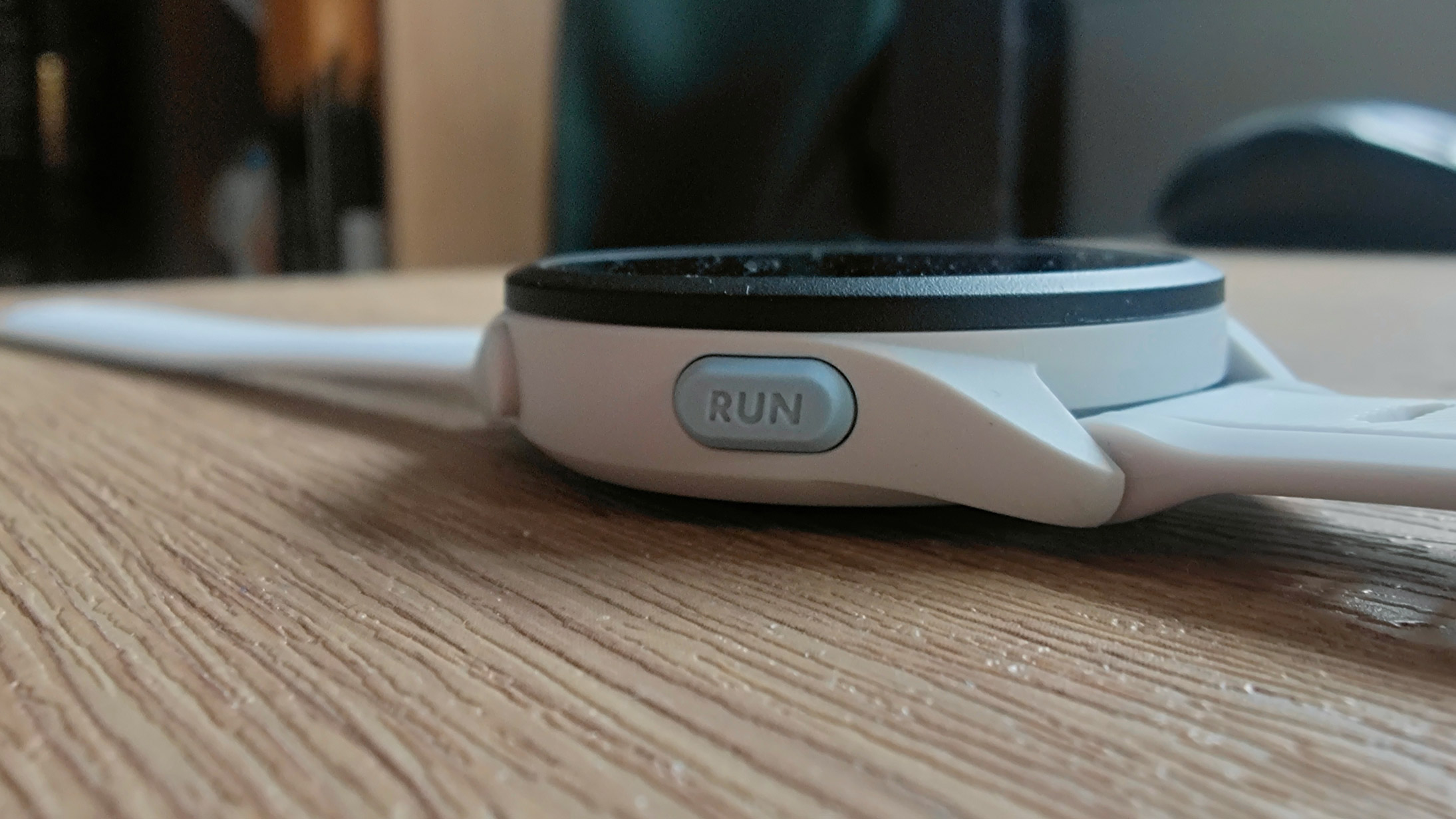
Specifications
Reasons to buy
Reasons to avoid
The Forerunner 165 from Garmin embraces the elements of a high-end running watch while fronting all the basic features, making it a fantastic budget-friendly running watch perfect for entry-level runners.
Most people who use running watches often rely on their wearables for extended services that can be integrated into their daily lives, and for its reasonable price tag, you'd be surprised to see that the Forerunner 165 takes that a step further. One of its most useful features is the Morning Report, a service cribbed from the 165 above, that gives you insights to your recovery process by offering workouts based on your status. That way, the watch can guide you to avoid further injury all the while ensuring to keep you moving.
Its GPS capabilities go a long way too, which during my testing, I found was accurate compared to the Garmin Epix Pro Gen 2, which itself was comparable to the Apple Watch Ultra 2/ If you're using the watch's GPS around four times a week, as I was, its battery life can last around nine days. It's also kept the modern design of its higher-end sibling the Forerunner 265, albeit significantly lighter.
Read our full Garmin Forerunner 165 review
Best Polar
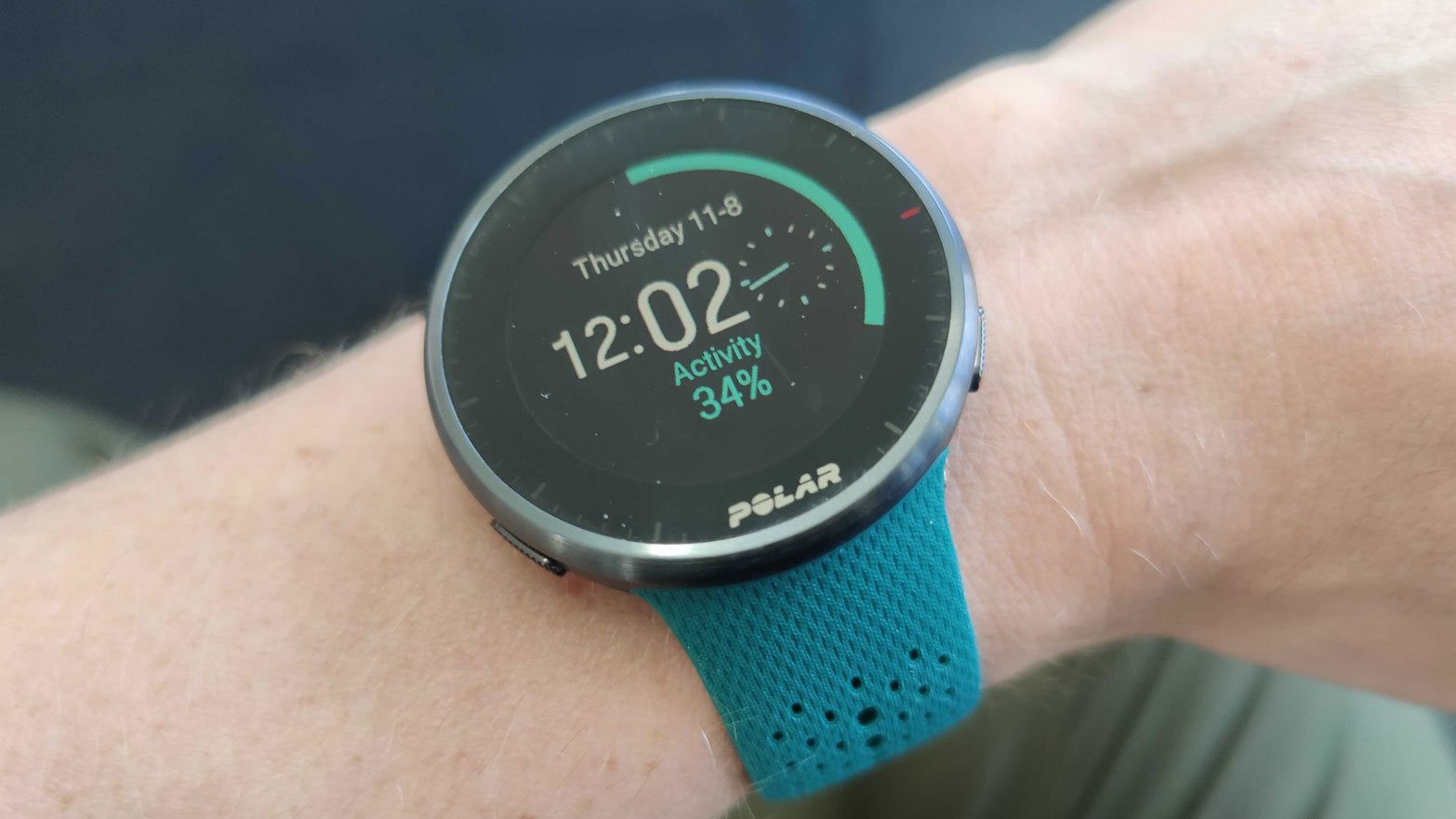
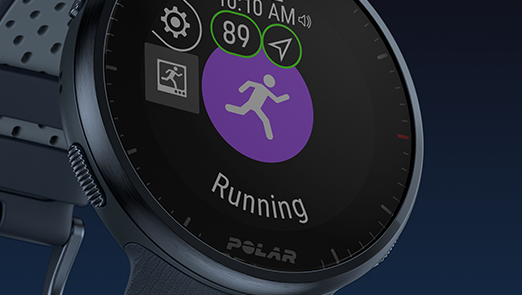
Specifications
Reasons to buy
Reasons to avoid
The Polar Pacer Pro shares a lot of DNA with the Polar Vantage V3 and, funnily enough, other Polar devices. It's a stripped-back, super-light, runner's running watch, with no time for smartwatch frippery. It's a terrific watch and very attractively priced, but it's missing a couple of things the premium models higher on this list are packing.
The most important inclusion is Polar's advanced suite of running metrics and suggested workouts. I love this watch as it provides some excellent training recommendations, a fitness test, and all the information I could want about my run including heart rate zones, burned calories broken down minute-by-minute, detailed maps of your routes, hills you’ve climbed, and power you’ve exerted. A fitness test was introduced in previous models which gives you numerical values for your VO2 max, maximal aerobic power, and maximal aerobic speed. Repeating the test at a later date will give you a measurable indication of how your fitness is improving over time.
The Pacer Pro is lighter than the Grit X, too, and may be one of the lightest watches on this list at 41g. It doesn't feel like a plastic toy either, as so many light watches do. It doesn't contain enough memory for music, and despite packing on-board GPS and trackback features, it doesn't display maps on its watch face, providing simple (in theory) directional arrows instead, which can be fiddly to use. However, it's a great watch for the price.
Read our full Polar Pacer Pro review
Best for multi-day events
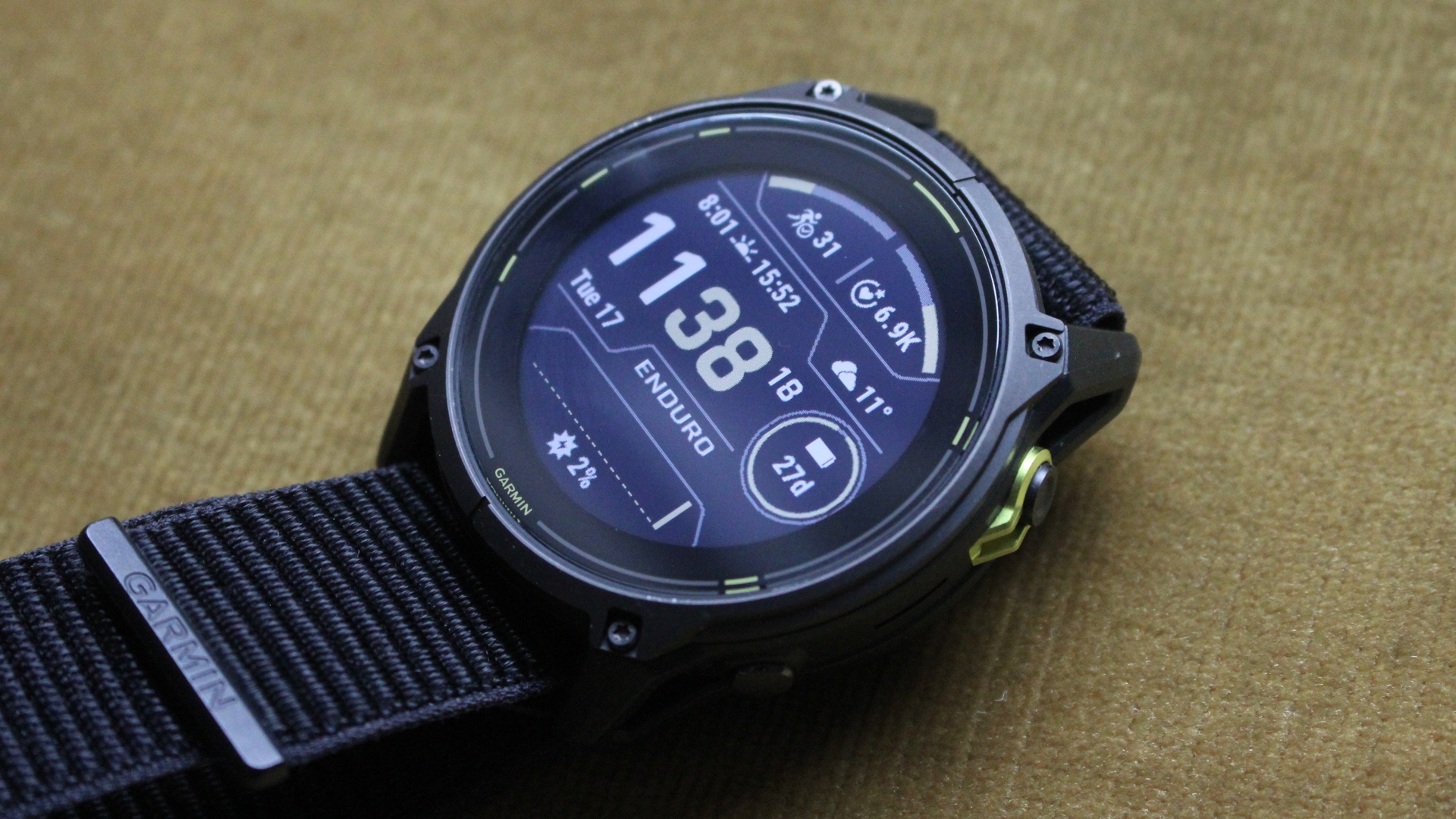
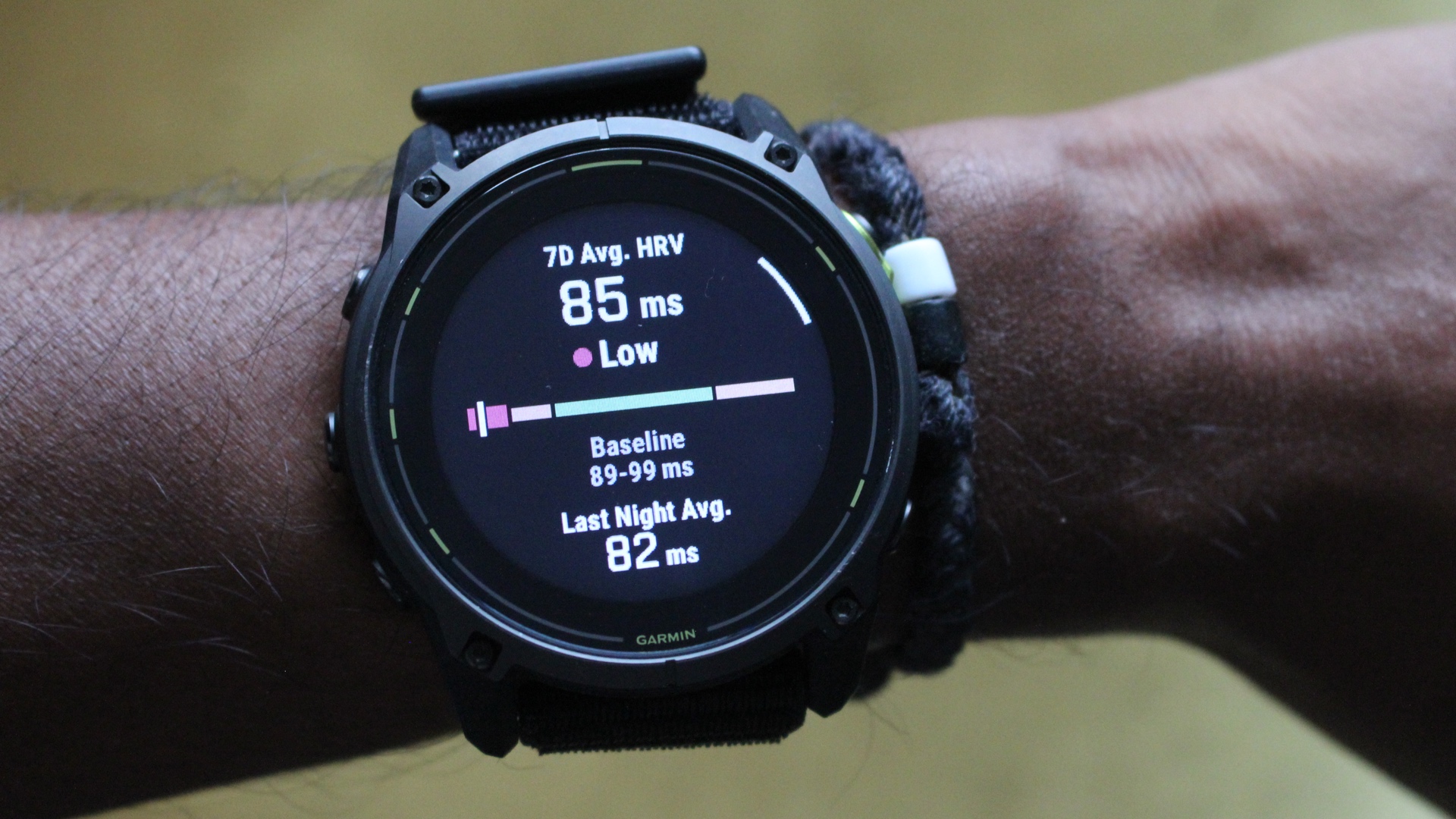
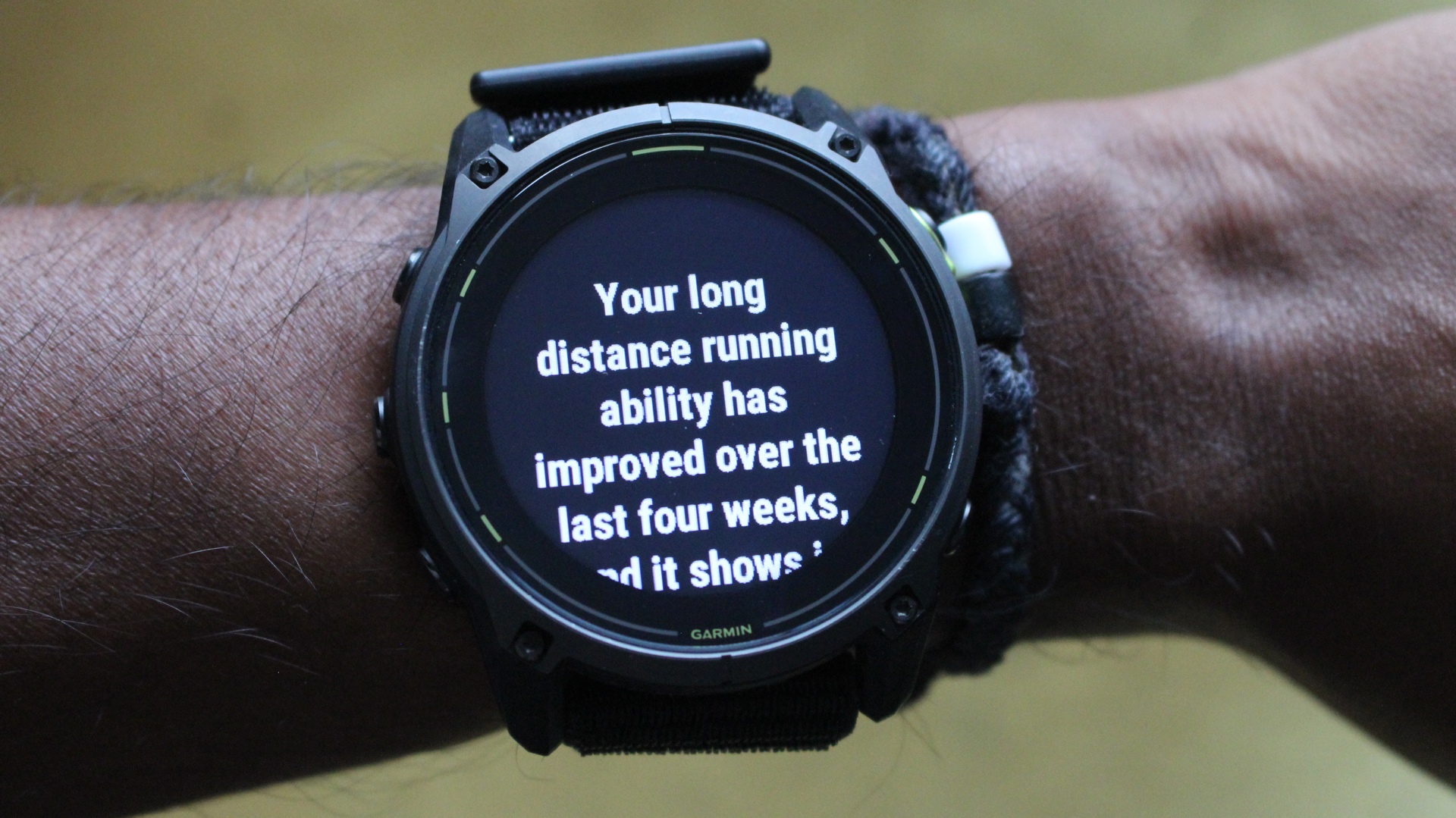
Specifications
Reasons to buy
Reasons to avoid
The Garmin Enduro 3 is a monstrosity. An endurance powerhouse, it builds on the Enduro 2, which already had some of the most impressive battery life we've ever seen on a watch, and adds more hours in GPS mode. Topographical maps and the new Dynamic Routing feature which allows you to go off-course and have the watch intelligently guide you back again, is incredible for endurance training. Running 30k in an unfamiliar neighborhood? Wrong turns are a thing of the past.
In general, the Enduro series gives you pretty much everything you could want to track runs. It's a tank, the Christian Bale Batmobile of fitness watches. It provides advanced fitness tracking metrics and offers sleep monitoring too. Features include a barometric altimeter, a heart rate monitor, a pulse ox monitor, 24/7 fitness tracking and smartwatch features like notifications and payments.
Its price will be prohibitive for many as it's primarily a tool for elite runners, but if you’re seeking a big watch that's a real battery powerhouse, the Enduro 3 is the one for you.
Read our full Garmin Enduro 3 review
Best for Wear OS users
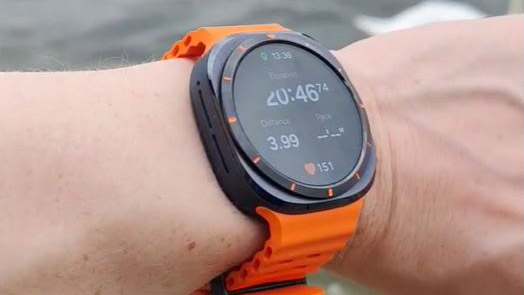
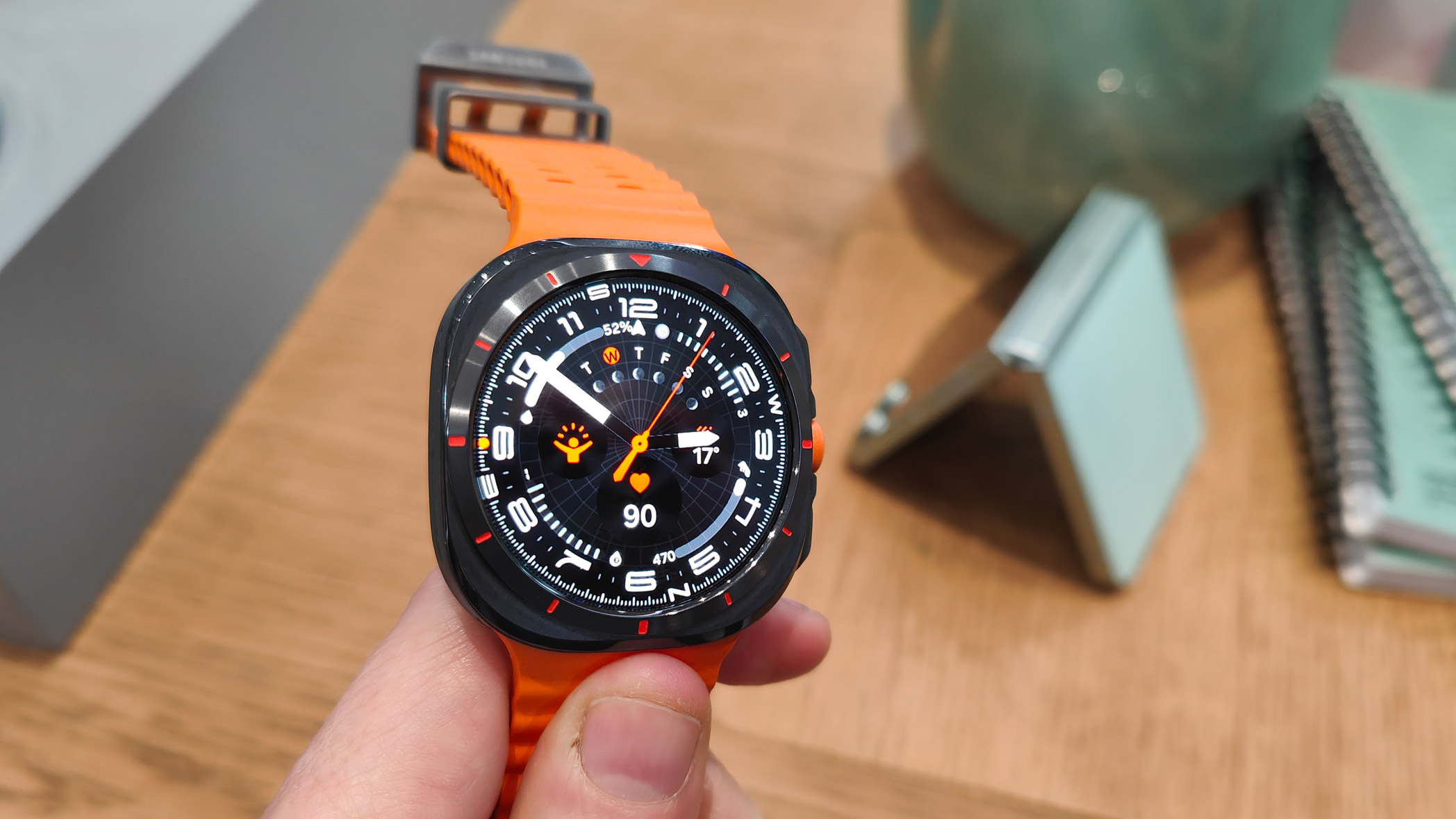
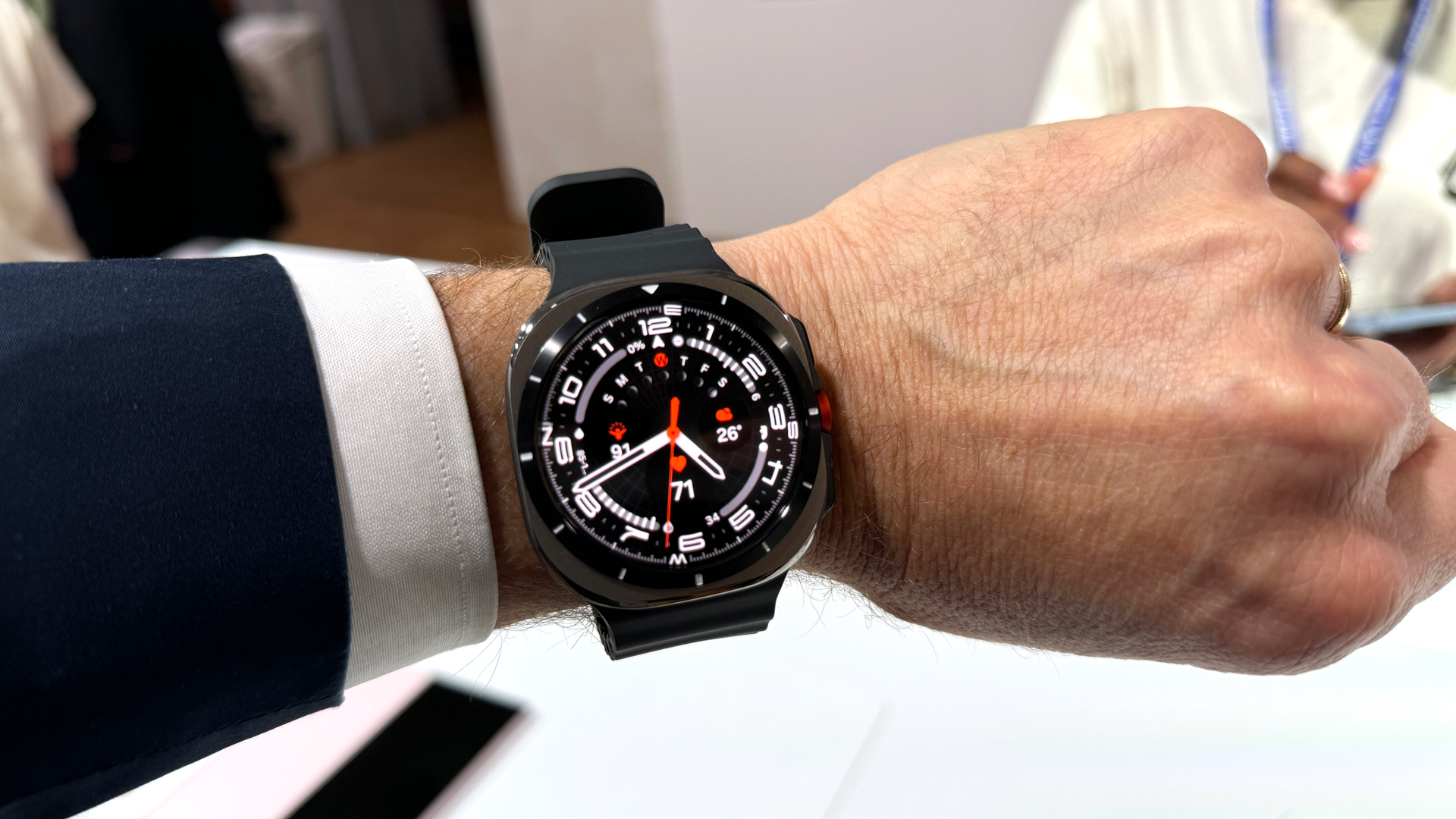
Specifications
Reasons to buy
Reasons to avoid
From a technical point of view, the Samsung Galaxy Watch Ultra is undoubtedly Samsung's best smartwatch ever. It's better than any watch they've ever produced, and that includes its build quality, size, durability, and feature set. It's even better than the Samsung Galaxy Watch 5 Pro from an outdoor workout standpoint.
The design has received a complete overhaul to make it more durable and rugged than ever. It has a thicker strap that is more hard-wearing, an outer casing that is scratch-proof thanks to its titanium material, and the watch face itself is cushioned by a squircle-style shape.
They've introduced a new button, which is orange and called the ‘Quick button’. If you think this looks remarkably like the button on the Apple Watch Ultra, then you'd be completely forgiven. I found everything to be fast and accurate when I tested it out, although I must admit, I prefer the look of the Apple.
All in, this is a cracking smartwatch that stands up to its competitors with consummate ease. Its high price, relatively low battery and smartwatch-first rather than running-first approach are the only reasons it's not higher up this list.
Read our full Samsung Galaxy Watch Ultra review
Best Fitbit for runners
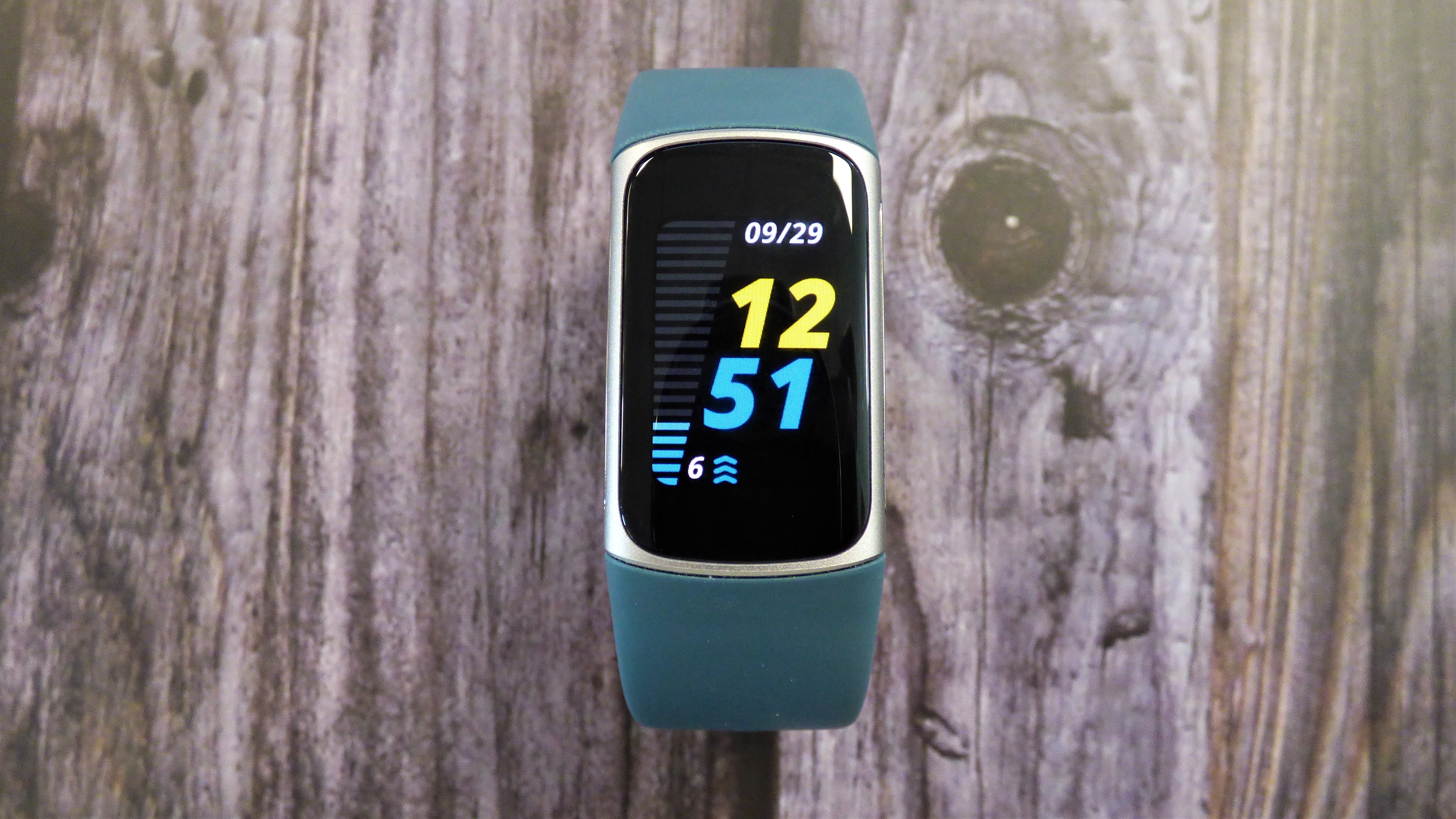
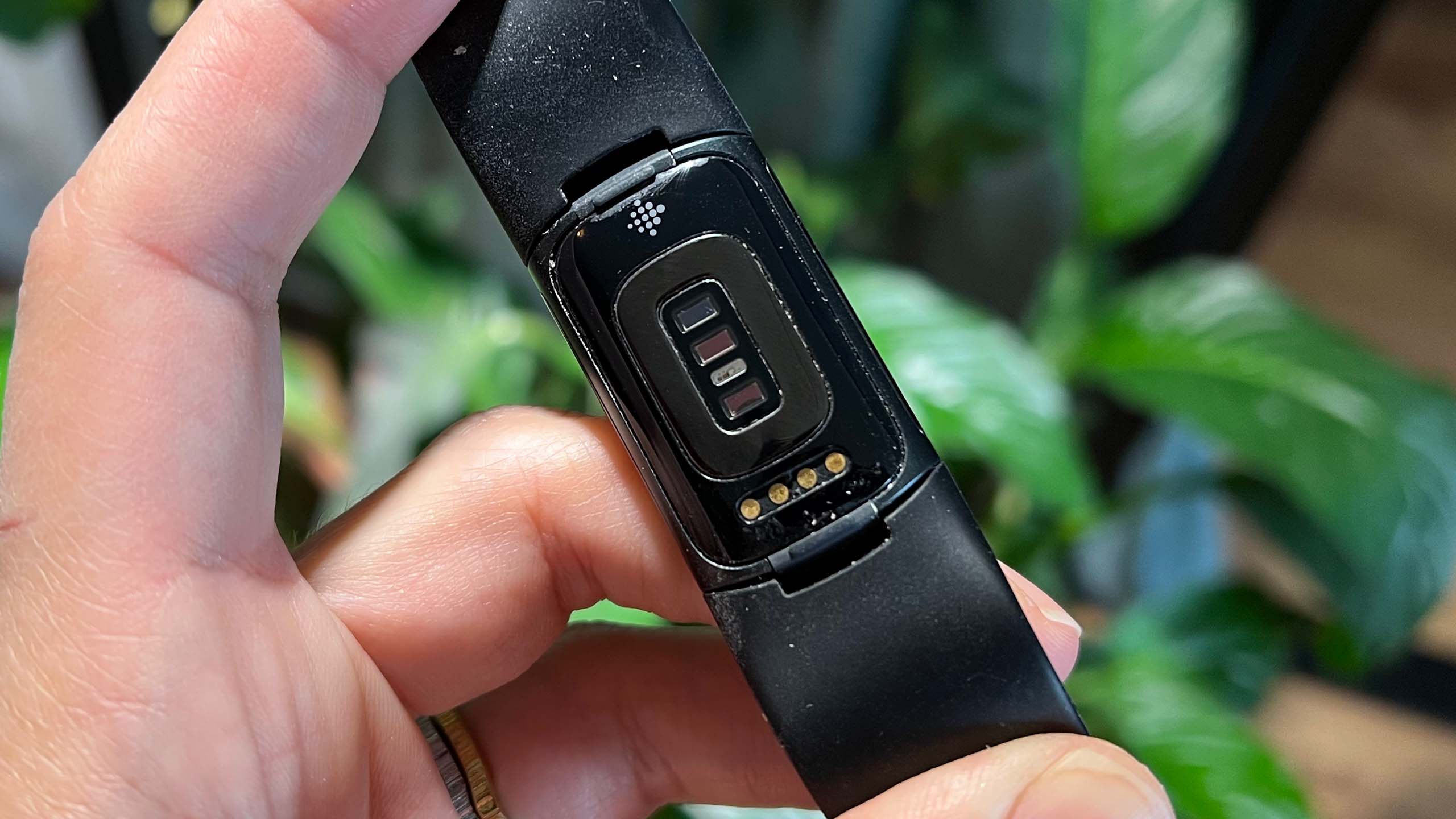

Specifications
Reasons to buy
Reasons to avoid
The Fitbit Charge 5 takes the best features from all of the company's other devices and rolls them into one sporty package. While the Charge 6 is out, the Charge 5 still beats it from an accuracy and usability standpoint, according to our writers' tests.
You get onboard GPS for tracking runs, walks and bike rides without carrying your phone; an EDA (electrodermal activity) sensor to measure changes in stress levels, an ECG app, and (like the Fitbit Luxe) a bright AMOLED display that makes it a pleasure to use.
The Charge 5 is a fitness tracker built for people who are taking their workouts seriously, but want an affordable option that works as an all-around activity tracker. Less obtrusive than a "true" running watch, it still provides excellent GPS-driven metrics such as pace, cadence and speed.
The Charge 5 doesn't let you control your Spotify playlist or other music from your wrist, but that's a minor quibble, and it's an otherwise excellent fitness tracker.
Read our full Fitbit Charge 5 review
Frequently asked questions
What's the best running watch for a beginner?
Beginners just starting their running journey are likely going to run shorter distances without worrying about complex running metrics. They'll also want to make a smaller investment, buying a cheaper running watch.
I'd recommend a Garmin Forerunner 165, Coros Pace 3 or a Fitbit Charge out of the list above. These devices are under $250 / £230 / AU$400, offer accurate heart rate readings, calorie estimations and GPS tracking.
The other watches in this list are also excellent options, but they're packed with features that many beginner runners might not need at first, such as full-colour-maps and training plans.
Other smartwatches such as the Apple Watch SE or the Samsung Galaxy Watch8 would also be suitable for beginners.
What is the running watch with the best battery life?
Without question, the running watch with the best battery life is the Garmin Enduro 3. With the battery-extending Power Glass option, the Garmin Enduro 3's 36-day battery life becomes 90 days, as long as you spend several hours a day outdoors in strong sunlight.
In GPS mode, this translates to a maximum of 320 hours. As long as the sun was strong enough, you could literally run for two weeks straight and not run out of charge.
What is the best running watch for ultramarathons?
There are several great choices in our best running watch list for ultramarathons. To choose a good watch for ultras, you need advanced running metrics and great battery life, along with navigational features to help during lengthy training runs.
Storage for music helps too, as you can go for long soundtracked runs without your phone.
The Garmin Forerunner 570, Apple Watch Ultra 3, Garmin Fenix 8 and Samsung Galaxy Watch Ultra all fit the bill here. Our best running watch overall, the Garmin Forerunner 570, is ideal for ultramarathons due to its long battery life and features like LiveTrack, so friends and family can keep tabs on your progress.
Garmin vs Apple vs Coros: Which is best?
Garmin, Apple and Coros watches all have distinct advantages. Apple Watches have much shorter battery lives than Garmin and Coros watches, but are vastly superior as powerful communication smartwatches you can load with third-party apps.
Garmin and Coros are lower-power devices, but tend to make up for it as they're specialised fitness tools with longer battery lives.
Garmin is top of our list, with the Garmin Forerunner 570 ranking as our best running watch overall. If you're looking for a well-rounded, well-priced running watch, this is the model for you.
The Coros Apex 4, Vertix 2 and Pace 3 are all great watches, but the Coros Pace 3 has been ranked as our best cheap running watch. If you're looking for a budget specialist fitness tracker, the Pace 3 is the best choice.
If you're looking for a fitness-orientated smartwatch and you're an iPhone user, the Apple Watch Ultra 3 will seamlessly integrate with your iPhone. This offers Apple Intelligence tools, on-wrist emails, calls and messaging capabilities, as well as being a fantastic fitness watch. If you're looking for a watch that works with your iPhone, this is the one to get.
Best running watch for heart rate accuracy
I've tested a lot of running watches, and I measured a lot of the watches above for accuracy by comparing them to a Polar H10 heart rate monitor. The Polar chest strap is a heart rate accuracy gold standard, and the closer a wrist-based fitness tracker can get to that number, the better.
The Apple Watch Ultra 3 is the most accurate smartwatch I've tested, accurate to within just 1 BPM on average during a four-mile run, and within 2 BPM during a 20-minute session on a stationary bike.
In comparison, Garmin's advanced Elevate V5 heart rate monitor (the optical heart rate sensor on the Forerunner 570, Forerunner 970 and Fenix 8) was within 5 BPM accuracy during my tests. Close enough for almost everyone, but the Apple Watch Ultra 3 is a shade more accurate.
Best running watch with an AMOLED screen
AMOLED screens are brighter than LCD and MIP screens, able to be easily seen in the dark and bright sunlight, with the tradeoff being they tend to use more battery power.
While the Garmin Forerunner 570, Fenix 8, Samsung Galaxy Watch Ultra and many others on this list pack AMOLED screens, the Apple Watch Ultra 3's LTP OLED display is the best screen in smartwatches, with a butter-smooth refresh rate and capable of shining with up to 3,000 nits of brightness.
How we test
Each time we test a running watch, we wear it for at least two weeks to ensure it gathers a full set of fitness data. Almost all modern running watches include sleep and recovery tracking, so it's essential to wear each one 24 hours a day to get the most accurate insights.
We test each watch on a pre-determined run and compare their heart rate data with figures from the best heart rate monitors and another control watch to see how they measure up. We've also put their different training tools to the test, making sure they're genuinely useful additions rather than gimmicks.
Each watch starts testing fully charged, and we record how quickly power is drained in typical use so we can compare it to the manufacturer's quoted figures. Our reviews will always tell you the features we had enabled and the type of workouts we tracked to get a good sense of battery life.
TechRadar running watch coverage
Buying guides
- Best Garmin watch
- Best Fitbit
- Best cheap running watches
- Best fitness trackers
- Best cheap fitness trackers
- Best heart rate monitors
- Best running shoes
- Best workout headphones
- Best bone-conduction headphones
- Best smartwatch
- Best cheap smartwatch
- Best smart ring
- Best Apple Watch
- Best Android smartwatch
- Smart ring vs smartwatch
Top reviews
- Garmin Forerunner 570 review
- Garmin Fenix 8 review
- Coros Pace 3 review
- Apple Watch Ultra 3 review
- Garmin Forerunner 165 review
- Polar Pacer Pro review
- Garmin Enduro 3 Review
- Samsung Galaxy Watch Ultra review
- Apple Watch Series 11 review
Explainers
- Garmin’s underrated race-day training tool is what keeps me from switching to the Apple Watch – here’s how to set it up
- How to use Garmin Coach to create a training plan on your Garmin watch
- How to use Heart Rate Zones on your Apple Watch
First-hand experience
- I tested the Apple Watch Ultra 3 and Garmin Venu 4 on a 7km run, vs a chest-worn heart rate monitor
- I review fitness trackers for a living – here's the best one I've tried in 2025
- I just tested the Apple Watch Ultra 3's heart rate tracking against a Polar H10 chest strap – here are the results
- Sick of fitness tracker subscriptions? Here are the 3 best Garmin and Fitbit alternatives I’ve tested with no paywall nonsense
Sign up for breaking news, reviews, opinion, top tech deals, and more.

Matt is TechRadar's expert on all things fitness, wellness and wearable tech.
A former staffer at Men's Health, he holds a Master's Degree in journalism from Cardiff and has written for brands like Runner's World, Women's Health, Men's Fitness, LiveScience and Fit&Well on everything fitness tech, exercise, nutrition and mental wellbeing.
Matt's a keen runner, ex-kickboxer, not averse to the odd yoga flow, and insists everyone should stretch every morning. When he’s not training or writing about health and fitness, he can be found reading doorstop-thick fantasy books with lots of fictional maps in them.